







Bhavya NaNda (Cherrybrook Technology high School) aTaR 99.05 SaNdhya SRiNivaSaN (Baulkham hills high School) aTaR 99.80 Millie GaRG (North Sydney Girls high School) aTaR 99.85 Nikhil kaNkaRla (Cherrybrook Technology high School ) aTaR 99.55 NiShTa kauShik (North Sydney Girls high School) aTaR 99.05 Class of 2012 Saahil RelaN (North Sydney Boys high School) BhavaNa BhaT (Girraween high School) aTaR 99.30 FREE Vol. 20 No. 4 (1) • JANUARY (1) 2013 • www.indianlink.com.au FORTNIGHTLY SYDNEY Level 24/44 Market St, Sydney 2000 • GPO Box 108, Sydney 2001 • Ph: 18000 15 8 47 • email: info@indianlink.com.au Sydney • Melbourne • Adelaide • Brisbane • Perth • Canberra EPPING CHATSWOOD HURSTVILLE Talent 100 coming to Hurstville Jan 2013 OPENING SPECIAL OFFER FIRST TERM FREE* * CONDITIONS APPLY. SEE INSIDE BACK PAGE FOR DETAILS. Simply call 1300 999 100 or visit us at talent-100.com.au to find out more!

2 JANUARY (1) 2013 www.indianlink.com.au 2 <> AUGUST (1) 2011 INDIAN LINK

JANUARY (1) 2013 3 NATIONAL EDITION


4 JANUARY (1) 2013 www.indianlink.com.au
PUBLISHER Pawan Luthra EDITOR
Rajni Anand Luthra ASSISTANT EDITOR
Sheryl Dixit MELBOURNE
Preeti Jabbal
CONTRIBUTORS
Danielle Mathais, Antoinette Mullins, Ritam Mitra, Jyoti Shankar, Chitra Sudarshan, Noel G DeSouza, Petra O’Neill, Geeta Khurana, Talia Kaur, Mital Parikh, Mohan Dhall, Rani Jhala, Sudha Natarajan, Nancy Jade Althea
ADVERTISING MANAGER
Vivek Trivedi 02 9262 1766
ADVERTISING ASSISTANT
Nitika Sondhi 02 9279 2004
DESIGN
Danielle Cairis
Proud members of:
Indian Link is a fortnightly newspaper published in English. No material, including advertisements designed by Indian Link, maybe reproduced in part or in whole without the written consent of the editor. Opinions carried in Indian Link are those of the writers and not necessarily endorsed by Indian Link. All correspondence should be addressed to Indian Link
Level 24/44 Market St, Sydney 2000 or GPO Box 108, Sydney 2001 Ph: 02 9279-2004 Fax: 02 9279-2005
Email: info@indianlink.com.au

www.indianlink.com.au
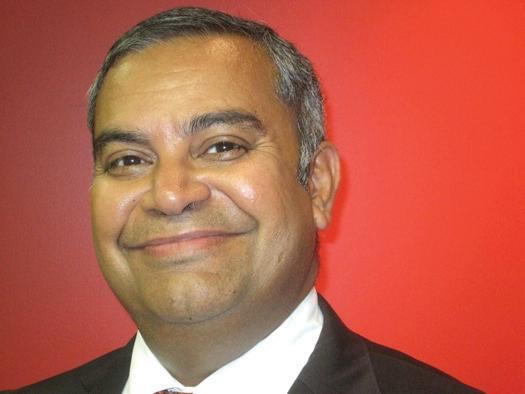
A society in transition, or one bordering on collapse?
transport is poor. The citizenry is frustrated at the lack of water, power, education facilities and good medical care. There is corruption at almost every level of government.
rape in a country where the family’s mother is such a revered figure is indeed a shameful indictment of the level to which morals and values have fallen in contemporary Indian society.
PAWAN LUTHRA
The capital of India is a city on the verge of a nervous breakdown. And this is not only because of the uproar caused by the brutality and senselessness of the fatal attack against a young woman on the streets of Delhi in mid-December. Or the manner in which the government reacted to protestors who took to India Gate to vent their anger at the system that has continued to fail them.
Once an international visitor is past the gleaming new arrival hall of the international airport, one can witness Delhi in full flow. While there are countless flyovers in the city, the sheer number of cars on the road causes endless traffic jams. Good car drivers are as rare as hen’s teeth!
The city has now expanded to encompass NOIDA in the North and Gurgaon in the South. The necessary resources of water, electricity and sanitation have yet to catch up. Public
When a senseless attack such as the one on December 16 hit the headlines, frustration at the system boiled over. People want action and they are demanding improvement in the system. That the next victim could be your sister, your wife or your friend, has brought this crime home to most people.
There are demands to hang the alleged offenders; others want a more excruciating punishment. The challenge however, is about how to change the system. The incidence of rape in India is alarming. According to the Times of India, there are over 15,000 rape cases waiting to be dealt in 5 courts, and these are only the ones that have been reported. And that’s not counting the ones not reported or withdrawn. Shamefully, as the Delhi rape case made headlines in major newspapers with reports of protests, there were pages filled with reported rape cases from the previous day from around India, carried over to other pages in most cases. The culture of
Both the police and judiciary have a lot to answer for. There is one police person for over 150,00 people in Delhi, whilst world standards are 1 for 30,000. A police force with a long-standing reputation of being susceptible to corruption hardly endears confidence in the system. Women driving their cars are told that they should not slow down at police check points after midnight if they are travelling by themselves. Hardly a show of confidence if you cannot trust the ones meant to protect you! The judiciary is under-resourced with cases taking upto 15 years to resolve. Justice should not only be done, but be seen to be done, and swiftly. In India, that is a pipedream.
What happened in Delhi makes one ashamed to be Indian. One can only hope that the current agitations will allow for a sensible long-term solution to be found. No person in India should ever have to go through what that brave girl went through on a casual night out in mid-December.
JANUARY (1) 2013 5 NATIONAL EDITION
EDITORIAL
INDIAN LINK
SPIRITUAL
VHP Australia
VHP Australia is seeking volunteer teachers to teach Hindu Dharma in Public Schools (approved by the Dept of Education). Training and materials will be provided. Details Akila Ramarathinam 02 8814 7016.
Sydney Veda Patasala is open for children and adults. It involves Vedic chanting and Sanskrit language. Classes are held at on Sundays Baulkham Hills, Carlingford, Moorebank and Westmead. Details Sri Subbuji 0425 284 501.
Bala Samskara Kendra (Sanskrit Language, Indian Culture and Heritage School for children) operates out of Toongabbie, Moorebank, Hornsby and Flemington. Students learn Sanskrit language (writing, reading, speaking and reciting poems). Details Rohini Srinivasan 02 9863 3067.
Sri Purandaradasa aradhane 2013
Sunday, February 10 from 9am to 2pm at Ermington Community Hall, 8 River Road Ermington. Sri Purandaradasa aradhane will be conducted. For details contact Chandrika Subramanyam 02 86777178
Ramakrishna Sarada Vedanta Society of NSW
Sunday 10 February, from 10.30am at Vedanta Hall, 15 Liverpool Road, Croydon, concluding with lunch. Silent meditation, vedic chanting, devotional songs, panel of speakers and talk by
What’s on
Pravrajika Gayatriprana.
For more details, call 9745 4320 or email: admin.saradavedanta@bigpond. com. Website: www.saradavedanta.org
Other activities at Vedanta Hall:
Sunday: Talks and silent and guided meditation from 10.40am to 12noon
Saturday: Yoga class from 3.30 to 4.30pm
Fortnightly on Friday: Bhagavad Gita Class from 7.30 – 8.30pm
3rd Thursday of the month: Vivekananda Book Club from 2.30 to 3.30pm
Also, young people’s meeting, special celebrations, retreats.
Hindi retreat
Friday 15 February, 7pm onwards at Brahma Kumaris Centre for Spiritual Learning, 186 Mount Hay Street Leura, NSW 2780. “To reveal secrets on how to maintain peace and happiness during all the situations in life, Brahma Kumaris Australia, invites you for a weekend
Hindi Retreat on the topic, “Raja Yoga Gateway to Explore Peace & Happiness”. The retreat ends at 2pm on Sunday, 17 February. For further details contact
(02) 4784 2500. For online Booking Visit: www.brahmakumaris.com.au/leura, or contact BK Asha on 0435 196 146 or BK Monika on 0430 403 857.
MISC
UIA Annual Awards and Dinner Nite
Friday18 January from 6.30pm at Bowman Hall, Campbell St, Blacktown 2148. To celebrate Australia Day and India’s Republic Day, United India Associations Inc.’s annual event will
felicitate seniors, HSC high achievers and prominent Australians that have contributed to the India-Australia or have made a contribution in community services. The event will include dances, music and cuisine with a buffet dinner. Tickets: $40pp, $400 for a table of 10. RSVP to Team.uia@gmail. com. Entry via presold tables only.
Republic Day/Australia Day
Saturday 19 January 2013 Federation of Australian Indian Associations (FAIA) invites all community members and their families to celebrate Indian Republic at Bowman Hall, Campbell Street, Blacktown, 6.00 pm onwards. Admission is free. For sponsorship, souvenir advertisements and cultural participation contact: Neera Srivastava on 0415 807 520 or Uma Swamy on 0468 341 907.
Inaugural Summer Cricket Day
Sunday 20 January 9am for 9:30am start at Parramatta District Cricket Club, Old Kings Oval, Parramatta. Parking in swimming pool carpark. 30 game over between UIA Cricket Team versus NSW Parliamentarians Team. Presented by United India Associations Inc in association with Parramatta District Cricket Club. For enquiries and RSVP, write to team.uia@gmail.com
Republic Day celebrations
Saturday 26 January at the residence of Mr Arun Kumar Goel, Consul General of India for Sydney at No 2, Pleasant Avenue, East Lindfield, Sydney NSW 2070 from 9am. There will be a flag hoisting ceremony, singing of the
LETTERS TO THE EDITOR
She’s NOT India’s effing daughter
Heinous. Grievous. Horrific. I sit here, blankly looking up dictionary.com trying to find words to describe the horror that was the ‘gang rape’ that occurred on December 16. I find nothing suitable. They are all woefully inadequate, all pathetic substitutes that we use because none of the language we know can capture the mind numbing, excruciating brutality inflicted upon ‘India’s Daughter’.
My blood runs cold, my insides turn to water and the hair on my body stands up as I read page after page of coverage of this horrifying assault. She was alone in her fight. She fought 6 fully grown men who raped her and brutally mutilated and assaulted her. She died of horrific injuries. India was never there for her, or for the thousands like her. So don’t call her India’s effing ‘daughter’. She never was!
I waver between despair, horror, rage and sobering grief. I’m not asking why. I’m not asking how. I’m asking, WHAT NOW? Thousands of years of oppression, prejudice and injustice have fuelled this monster
which freely roams our streets and now stands at our doorsteps, promising to brutalise us into oblivion. And it IS a promise. And it is being fulfilled on a chilling scale: a rape is reported every 20 minutes in India, and many more go unreported. But the veil has been lifted. This event has branded the nation’s consciousness, shoved our faces into the toxic venom that courses through our country’s veins everyday – silently mutilating, maiming, torturing. She wasn’t the first, and she won’t be the last. India, we failed her. So what now?
The silence must go. Rape, domestic violence and sexual harassment must no longer be invisible. Talk about it at home, at work, with your friends, parents, relatives and children. Don’t tolerate sexual harassment. If you see it on the street, say something. I was 15 when someone brazenly yanked on my dupatta (scarf) as I walked down a bustling Hyderabad street at 3pm. I stopped and stared at the perpetrator, engaging in a battle of wits as his hand provocatively held tight onto one end of my dupatta, and my hand held onto it on my shoulder, protecting myself from the ‘uncovering’ he was threatening. Not one person stopped.
National Anthem, and reading of the speech of the Hon. President of India.
All Indians or persons of Indian origin and others are invited to attend on this auspicious day. Free parking is available at East Lindfield shopping centre, adjacent to the house. RSVP by email to indians@indianconsulatesydney.org
Remembrance Ceremony and Annual Gandhi Oration
Wednesday 30 January, 2013, Remembrance Ceremony 5:15pm onwards at the Gandhi bust on the UNSW Library Lawn. Followed by the Gandhi Oration at 5:45pm for 6:15pm start at the Sir John Clancy Auditorium, UNSW.
The annual Gandhi Oration commemorates Martyrs Day and will be delivered by The Honourable Michael Kirby AC CMG who will address the topic of “What would Gandhi do today? A meditation on the contemporary challenges of human rights.”
The Gandhi Oration will be preceded by a remembrance ceremony to commemorate the anniversary of Mahatma Gandhi’s assassination on 30 January 1948. The event is free and all are welcome, however RSVPs are essential. Please click on http:// unswinternational.wufoo.com/forms/ m7x3q1/ to RSVP by 28 January.
Going to the Mahakumbh?
Australian independent documentary film-maker Mark Gould is searching for Hindu Australians who intend to go to the upcoming Maha Kumbh Mela
at Allahabad (Prayag) in Feb 2013.
ABC TV’s religious program Compass (6.30pm Sundays) is keen to tell the story of this sacred journey and what it means to the devotees. The subjects of the film would need to be prepared to share their stories, their bhakti and relationship to their faith on camera in a documentary focussed on this special pilgrimage - why they are making it and what they hope to gain from this great event.The ideal subjects would be devout Australian Hindus - individuals or a family who are articulate about their faith and keen to reconnect with their Hindu traditions.
Details Mark Gould 0419 635 614 or email mark@BondiRocksMedia.tv
English conversation classes in 2013
Marrickville Council’s very popular English Conversation Classes will commence as follows:
Term 1: 28 January – 5 April 2013
Term 2: 22 April – 28 June 2013
Term 3: 15 July – 20 September 2013
Term 4: 7 October – 13 December 2013
The classes help participants improve their English, as they practise conversing in English and learning about Australian culture. The free classes will be held at Marrickville Library. Participants must register in person, and the registrations will be held at Marrickville Library on Friday 18 January from 1pm – 2pm. For more information please contact Marrickville Library on 9335 2173.
Not one person stepped up to help me in my fight with this unabashed offender. Never, bar once, in the many cities in India that I have lived in –Mumbai, Pune, Chennai, Bangalore and Hyderabad – has anyone EVER stood up for me. This needs to change. This is our duty, our responsibility.
Stop blaming the victim. If you do, you’re part of the problem. Get an education. Google rape, rape myths, sexual harassment, women’s oppression, sex selective abortion, acid attacks. The current environment blames the victim, and look where that’s got us. We need to change.
Don’t wait for others to do something. Be the change. Our leadership is primitive and outrageously patriarchal at best, callous and apathetic at worst. They’re not going to make this happen. In fact, they’ve LET this happen. You need to change it. WE need to change it. Blog, write, read, rally, protest, educate, lobby. NOW! And don’t stop till Indian women have freedom, dignity and opportunity. Then we would have earned the right to call her ‘India’s daughter’.
Dipanjali Rao Melbourne
Cannot wait to come home
As an Indian Australian visiting New Delhi since the past two weeks, I am deeply saddened by the events to have gripped the nation. What saddens me more is the lack of government and police response.
Speaking to locals I note they are not at all surprised by the lack of action. In post-British India, Indians have come to expect such inaction. Like many, I do not know the girl nor her family, and cannot imagine the grief they are experiencing.
I too have a daughter, and I am sad to say I cannot wait to board my plane back home.
Dr Raja Devanathan Melbourne
6 JANUARY (1) 2013 www.indianlink.com.au


JANUARY (1) 2013 7 NATIONAL EDITION
Amazing achievers
Several bright young people share their success and experiences of the 2012 HSC
Definitely pick subjects you actually enjoy doing, otherwise you’d be sitting in the course, but won’t be motivated to work - do what you enjoy, that’s where motivation comes from Bhavana Bhat
BY DANIELLE MATHIAS
After a hard year of stress and preparation, the results are finally out for the HSC graduates of 2012. Indian Link spoke to some of the top rankers in the community about their studying techniques, their attitude towards the HSC and their future plans.
What is most interesting about this new breed of graduates is their ability to juggle many balls, and yet still have the ability to perform very well in the exam. Their extracurricular activities are interesting, to say the least, they are young, confident, focused, down-to-earth and most of all, very sure of their future. We wish them all the very best in their future endeavours.
Choose the right subjects
A key to success for many HSC students is choosing the right subjects. This was certainly the case for Bhavana Bhat from Girraween High School. “Definitely pick subjects you actually enjoy doing, otherwise you’d be sitting in the course, but won’t be motivated to work - do what you enjoy, that’s where

motivation comes from,” she says.
Bhavana received an ATAR of 99.30 and ranked 18th in NSW in Chemistry, which she completed as an accelerated course last year.
Year 12 is an intense time, not only for the HSC students and their peers, but for their families as well. “My family was a huge support, providing me with English and Mathematics tutoring and any other resources I needed to assist my study, she reveals. “Whenever I’d need the resources – extra tutoring or classes – they’d organise that for me, work around my schedules with dinner time… make it easier and less stressful,” she adds gratefully. And the effort certainly paid off for this talented young lady and her family.
Bhavana’s study technique mainly involved setting a plan for herself for what needed to be revised the night before each exam, as well as arranging set tasks to complete. She believes that this strategy can help students preparing for their HSC.
Regarding her future, Bhavana has applied for a double degree in commerce/law and is interested in doing something in the business field, such as becoming a commercial lawyer.
And the highlight of her success will be the opportunity for Bhavana to start dancing again, something she always loved and indulged in as a recreation and sport throughout high school, until she stopped in Year 11 to focus on her studies.
Love of learning
It was her pure love of learning that drove Millie Garg from North Sydney Girls High School to work hard to achieve the best that she could in her HSC exams. And that best was an impressive ATAR of 99.85, a satisfying result for this young achiever.
“My passion for knowledge and learning was one of the key factors of my success,” reveals Millie, who has always been one to follow her passions, particularly when it came to choosing the right subjects.
During junior school, she found that Science and Maths came naturally to her. However, Millie also loved English as she had enjoyed reading since the age of 7, and literature was also one of her hobbies. “I decided that my natural ability in maths would give me an extra push, but I also decided to take up English Extension 1 to give myself a balance,” admits Millie.
“It’s not fun to be in the same mindset with all similar subjects,” she adds.
And as a naturally social person, Millie emphasises the importance of staying balanced throughout the HSC, as the stress can sometimes be overwhelming.
“HSC is not just about working hard but about staying mentally tough as well. You can’t be mentally strong in an exam if you are not relaxed enough – if you can’t go into an exam and think clearly, you can’t reach your full
potential or achieve the best that you can,” she says.
Millie also remained consistent with her studying technique throughout the year, making sure she was constantly on track with everything that happened in class, which she feels is the most important thing.
Balanced lifestyle
It was 3am in India when the ATAR results were published in Australia, and Bhavya Nanda and his family were waiting anxiously to find out how he had scored. And they were certainly not disappointed. The Cherrybrook Technology High School graduate had in fact received the top ATAR of 99.75 for his school! “I refreshed the screen to see if it was real,” admits Bhavya. “I was really surprised when I saw what I had achieved.”
“Everyone was really pleased, we pulled an all-nighter celebrating and discussing results with my friends in Australia,” he adds with a smile.
Bhavya’s philosophy is that always being one step ahead of the game is beneficial in all aspects of life, but especially when it comes to the HSC exams.
“Preparing early really helps to get an effective and adequate amount of study needed to excel. And the tutoring I received in Maths and Chemistry also helped put me ahead of the class, as my tutors taught from a few dot points ahead in the syllabus, and covered
It’s important to set deadlines and plan,” he says, “It keeps you motivated. No one is perfect, and in the end it helps you remain focused Bhavya Nanda
8 JANUARY (1) 2013 www.indianlink.com.au COVERSTORY
everything in depth,” he explains.
Bhavya says he always approached study in an organised way and never left anything till the last minute or crammed.

“It’s important to set deadlines and plan,” he says, “It keeps you motivated. No one is perfect, and in the end it helps you remain focused.”
Bhavya feels that it is also important to work out a time of study that is most effective and productive. “For me, straight after school in the afternoon was just right as I remained in ‘school mode’ or in a study mindset,” he says.
And Bhavya certainly needed that study time, as being in his final year of school didn’t entail much of a change from his regular
lifestyle. “I managed to maintain a balanced lifestyle; I continued to play cricket and rugby, and I went out with my mates. The activity kept me fit and made Year 12 more enjoyable and less stressful,” he admits.

Bhavya is now really looking forward to pursuing a double degree in actuarial studies/ economics at UNSW, which he says will hopefully be a “challenging, yet rewarding” course.

Thank you for the music!
Nishta Kaushik from North Sydney Girls High School plays in the Warringa Community Band, and thoroughly enjoys her music. “Maintaining this balance between
work and play helped me a lot during the HSC year. My music kept me alive as it kept my studies more focused, and I could also concentrate on working my study schedule around my extra curricular activities,” she explains. “Having a balance makes you happier, gives you a better outlook on life,” she says. “The brain works better when you’re the happiest.”
Nishta was certainly delighted with the news that she had received an ATAR of 99.05.




“It is crucial to keep good mental health throughout the stressful HSC period,” she says, revealing that she had seen how exams and marks affected her peers and dragged them down emotionally.
Nishta ensured that she kept her hobbies like music in her life, because having a balance helped her to be resilient and to easily bounce back from any struggles in her studies.
“For example, on days where I didn’t have band practice, I’d feel like I had the whole day to study so I’d be more likely to waste time,” she says.
Although Nishta admits that band events, such as national competitions, did take time out of her study, she says that it was ultimately a good break and allowed her to come back more refreshed and focused.
But choosing to take Music Extension as a subject for the HSC was one of Nishta’s best decisions. “This is something I
am really good at, I enjoy it and it gave me a break from other subjects. Doing music as a subject felt like I was indulging in my hobby,” she says. “I could just tell myself I was ‘studying’!”
Nishta is looking to do something in the health sciences field, such as medicine or dentistry. “I’ve always found that the satisfaction of being able to use my knowledge to help people has been very appealing,” says this musical young lady.
The next challenge
Now that the HSC is done and dusted and Sandhya Srinivasan from Baulkham Hills High School has scored an ATAR of 99.80, she is ready to take on her next challenge.
JANUARY (1) 2013 9 NATIONAL EDITION
NikhilKankarla NishtaKaush i k Bhavy a N a n d a MillieGarg
SaahilRehlan BhavanaBhat SandhyaSrinivasan
Sandhya is a Bharatnatyam dancer and is now looking forward to doing her debut encore performance or arangetram, which is held after years of training in the dance form, to signify a rite of passage in her dance career.
Her parents enrolled her into Indian dancing at the age of 5, and Sandhya continued her lessons, taking a break only a month before the HSC, where she stopped to focus on her studies.
But that’s not this young lady’s only skill. She also plays the clarinet, having progressed up to grade 5 in the AMEB exams, and she intends continuing playing after the HSC. So with all these extracurricular activities, how did Sandhya manage to score an ATAR of 99.80? “Working towards a goal is always a motivating factor when it comes to study,” she explains. “ I aimed for the goal of 99.75 or above and worked towards that goal throughout the year. This helped me to remain focused and motivated me into to studying harder.”
When she found out that she exceeded her goal, Sandhya was incredibly surprised, as were her parents. “They were happy,” she said. “I don’t think they expected me to get that high a score.”
And the support she received at home was really good, as her parents did not interfere with her studies. This young lady would have study sessions with friends before exams where they would compile questions together and
do past exam papers. Sandhya would also make notes after every lesson and always ask questions in class to eliminate any doubts. Her hard work has now paid off, and Sandhya is looking forward to specialising in the field of medicine, and possibly joining a university in Queensland. Naturally, her clarinet will go with her!
Enjoying the challenge
Saahil Relan from North Sydney Boys School likes competition and for him, the HSC posed one of the greatest challenges of his young life. “Enjoying a challenge and having future goals is a great benefit,” says Saahil. He used his future goals to help him choose his subjects for the HSC. “I have always wanted to keep engineering and medicine on an open scale in terms of my career path, so I chose chemistry and physics, as those were the prerequisite subjects,” he explains. “But my interest in science subjects also came from the fact that they were difficult, and I wanted to challenge myself.”
Saahil’s subjects: Chemistry, Mathematics Extension 2 and Physics, in particular, are all high scaling. “Pick subjects that you know will scale well,” he says to future HSC students, “the challenge is worth it!”
Healthy competition with close friends at school also helped Saahil as they were supportive of each other and tried to collectively get
their school to the top. Saahil enjoys playing sports and has a keen interest in soccer, cricket and swimming. He tried to maintain a balance between leisure and studying. “If I didn’t pursue any leisure activities, I would have suffered due to stress and overstudying,” he admits. “I tried not to get addicted to games or anything that could be a continuing distraction. I used physical activity as a balance to get my heart rate up, keep healthy and fit, and not get too distracted,” he adds.
In the future, Saahil intends taking challenges in his stride, and aims to become as successful as possible, while still enjoying himself. “People always focus on one or the other. HSC and studies are not the be all and end all, but at the end of the day you have to study as well… don’t waste your life,” he says, a mite philosophically. He intends to apply for an engineering/ commerce course.
Exploring the world
With the HSC now in the past, Cherrybrook Technology High School graduate Nikhil Kankarla, is now looking forward to seeing the world and starting life after high school. Nikhil, who received an ATAR of 99.55, says that he is hoping to get into a mechanical engineering/commerce course at UNSW, but isn’t looking way too far ahead.
Right now Nikhil has Europe
on the mind as he is hoping to travel there soon. “I have always had a fascination with the continent, and I have never been to a place that snowed,” he says. “I hope all my preconceptions about Europe, based on movies and TV shows, are real and that it is as good as I expect it to be,” he adds enthusiastically.
Nikhil is also looking for an internship or professional work in the engineering field to gain some experience.
While this young man was expecting a 99+ ATAR and was happy to have lived up to his expectations, he was surprised to discover that he had come 9th in the state in Business, as he thought it was his weakest subject. “My parents were really happy with my results, but I think they would have been fine regardless of what I achieved, as they saw me put in the effort,” he says.
Although Nikhil had only been in Australia a few years, his English skills are very good and he realised that he could cope well with Advanced English. He also tried to vary his subjects from maths and science, by choosing business studies. “I had a bit of an interest in business and commerce,” he said. “I thought I’d mix it up a bit and give it a try.” And what a try it’s been!
Nikhil’s now enjoying his break, living for the moment and hanging out with friends. And he certainly deserves it, as all the hard work has definitely paid off.
HSC and studies are not the be all and end all, but at the end of the day you have to study as well… don’t waste your life
10 JANUARY (1) 2013 www.indianlink.com.au COVERSTORY
Saahil Relan
Having abalance makes you happier, gives you a better outlook on life. The brain works better when you’re the happiest.
Nishta Kaushik
As an AMP Financial Planner and Accredited Mortgage Consultant we can advice you on:

• Employer Super
• Personal Super
• SMSF
• Retirement Planning
• Personal Insurance
• Life Cover, TPD, Trauma and Income Protection

• Investment Planning
• Debt Management
• Homeloans
• Mortgages
• First Home Savers Account
For a FREE initial financial health checkup appointment Call us on 1300 887 482
Email: nalini.sankar@ampfp.com.au www.aroundthecorner.amp.com.au

West Ryde Office: 970 Victoria Road, West Ryde, NSW 2114

Dural/Castle Hill Office: Suite 5 & 6, 534 Old Northern Road, Round Corner, NSW 2158
Nalini Sankar of Around The Corner Financial Pty Ltd is an authorised Representative of AMP Financial Pty Limited, ABN 62776 764 006
JANUARY (1) 2013 11 NATIONAL EDITION





12 JANUARY (1) 2013 www.indianlink.com.au SHASHI HAIR & BEAUTY SALON AND BODY PIERCING CENTRE We use all dermalogica products Mobile: 0411 140 963 Blacktown Shop 2073, Level 2 Westpoint Shopping Centre Tel: 9679 9288 Mt Druitt Shop 222 Westfield Shopping Centre Tel: 9675 1200 St Marys Shop 26 St Mar ys Village Tel: 9833 3334 Merr ylands Shop 1014 Stockland Merrylands Tel: 9682 2002 NOW OPEN IN STOCKLAND MERRYLANDS • Threading • Facials • Waxing • Tinting • Body Massage • Acrylic Nails • Ear, Nose And Body Piercing • Ipl-Permanent Hair Reduction • Weight Loss • Body Treatments • Micro-Dermabrasion • Non-Surgical Face Lift • Painless Skin Tag Removal • Massage • Haircut, Perming, Keratin Treatment, Hair Colouring, Foils, Tint Regrowth, Full Colour, Chemical Straightening, Up-styles Yes we do Shahnaz Facials Hair Ser vices Gift Vouchers Available




JANUARY (1) 2013 13 NATIONAL EDITION FREE CALL AUSTRALIA WIDE 1800 070 921 SYDNEY * MELBOURNE * BRISBANE * ADELAIDE * PERTH
Pi philosophy
A young man and a tiger embark together on an epic journey of survival, self-discovery and perseverance, by
ANToiNeTTe MulliNS
Based on the book by Yann Martel, the recently released movie Life of Pi is an unforgettable story about courage, perseverance, inspiration and hope. The book itself won the prestigious Booker Prize and sold seven million copies worldwide, spending years on bestseller lists. And now the movie – which unfolds over three continents, two oceans, many years and a wide universe of imagination – is already being internationally acclaimed for its distinctive charm, excellent imagery and as a truly believable adaptation of the book.
Life of Pi has already won awards from other film critic groups including six awards by the Las Vegas Film Critics Society and nine nods for the 18th Critics’ Choice Movie Awards. It has also been nominated for three Golden Globe awards, forbest motion picture (drama), best director and best score.


Inspiring tale
Not giving anything away, the story starts with the adult Pi Patel – played perfectly by Irrfan Khan – telling his story to an author – this is a story that “will make you believe in God”, Pi tells him. It’s the story of his life – a young boy from Pondicherry in French India, whose family owns a zoo. As he grows up and endeavours to find his place in the world, we meet many people who influence his young life and shape him into the little human he’s becoming. In the film, 17 year old Pi, played by Suraj Sharma, is told that the family is leaving India in search of a better life. This means moving as a family to Canada and leaving behind everything that Pi knows, including his first love. His mother, played by veteran actress Tabu, is a grounding force in his life and tries to shelter him from the harshness of this world. By contrast, his father takes on a more practical view, teaching him that although the world is beautiful, it can also be very dangerous – a lesson stamped into Pi through a very close encounter with a Bengal tiger called Richard Parker.
The family boards a Japanese cargo ship and meets a sadistic chef, played by Gérard Depardieu. Pi’s world is shattered when the ship sinks and he is cast adrift on a lifeboat in the middle of the Pacific Ocean with some very interesting (and dangerous) characters. The journey of self-discovery, courage and perseverance that follows encourages us all to hang in there, to believe in ourselves and to find joy in even the smallest of victories.
Although the story has many religious elements, it is not focused on just one. It teaches religious tolerance – something we can all learn! The young Pi is exposed to many facets of religious teachings, including Hinduism, Judaism, Islam and Catholicism. This makes for
some interesting moments in the film, as he prays a lot and in many different ways. As his father says, “At the rate you’re going, if you go to temple on Thursday, mosque on Friday, synagogue on Saturday and church on Sunday, you only need to convert to three more religions to be onholiday for the rest of your life.”
A directorial challenge

Director Ang Lee (of Brokeback Mountain and Crouching Tiger, Hidden Dragon fame) develops the story using his kaleidoscopic imagination and visionary genius. Creating a visual marvel where the cinematography takes on a life of its own – even the great wide ocean where our hero finds himself adrift, acts like a character in the story: both villain and reluctant hero, helping Pi along his voyage of self discovery.
When I heard Ang Lee was making a movie from the book, I was very excited but also anxious, as I loved the charming picture of India that Yann Martel had painted. This is in contrast with many Hollywood movies showing the gritty side of India – such as in Millionaire. However, I was relieved after seeing Life of Pi, which paints a serene, picturesque and often idyllic French India. Ang Lee never considered shooting the first act of the movie anywhere else, as he explained: “While we were working on the script I scouted around, and there is really nothing else that compares to French India. It’s unique and somewhat unfa miliar to the rest of the world. It’s like you can just drop a camera anywhere in there, turn it on, and the picture will be beautiful.”
In telling Pi’s story, Mr Lee pushes the boundaries of cutting-edge motion picture tech nologies, which films such as Avatar and Titanic 3D have done. The character of Richard Parker has been expertly brought to life through the magic of CGI – a fact for which Suraj is very grateful as he did not relish acting with a live tiger on a small lifeboat!

I was an avid fan of the book – after reading it I tried to take on Pi’s way of seeing the beauty in every situation and making the most of it. Not always an easy task, but I found that when you tackle everyday frustrations with a bit of humour, you can overcome any thing.
And now, I love the movie even more. Because Life of Pi is a heart-warming story, one of beauty and warmth that tugs at your heartstrings and makes you laugh, all at the same time. If you have time, read the book first. But watch the film anyway – with the animal scenes and stunning visions of India in 3D, it’s a delight for the entire family. The film is rated PG, so take the kids and go see it this holiday season, it’s a delight for the whole family!
SPECIAL REPORT
Strength and sensitivity
SuRAJ SHARMA talks to ANToiNeTTe MulliNS on his life before, during and after Pi
honor. Suraj stated that the ceremony was to make things ‘official’ and that Ang would have taken him under his wing anyway, because that’s what comes naturally to him. “He is a great teacher,” said Suraj.
Pi is a delightful character whose sense of humour and kind heart guides him through life and gives him the courage to face his very difficult journey. He’s the kind of on-screen character that makes you want to shout out, “C’mon little man, you can do it!”, while fellow movie-goers shout at you to be quiet. After meeting Suraj Sharma, who plays this incredible character with a unique authenticity, that feeling was reinforced several times over. I cannot imagine anyone playing the character of Pi better than Suraj, who is amazingly, a newcomer to the world of acting. Anyone who has seen the movie willagree with me that Suraj became the character of Pi wholeheartedly. He completely won over fans of the book, earnest critics, general moviegoes and unsurprisingly, the crew of the movie, with the strength and sensitivity of his performance.
On his recent trip to Sydney to promote the film, I caught up with Suraj to find out about his Pi experience.
On meeting him, Suraj comes across as an uncomplicated yet sensitive person, who practically shines with excitement when talking about his experiences in making Life of Pi, and his excitement is infectious. Its clear to me that he takes joyfrom simple everyday experiences. I interviewed him at the Intercontinental Hotel in Sydney in a room full of people, two cameras and multiple lights shining down on us, which is certainly not an everyday experience. At least, not for me! But just as Ang Lee helped Suraj calm down during the making of the movie, Suraj had that effect on me. I took a deep breath and we got started.
17 year old Suraj was cast as Pi after an extensive search all over India, through an audition process involving 3,000 young men. “I was really nervous, especially during the final audition. I was actually shaking but Ang calmed me down – he’s got this thing about him that calms people down,” said Suraj, of his first encounter with the renowned veteran director. “Ang is an amazing human being. Some of the scenes were really intense and you felt yourself crumbling, but he was the glue that kept everyone alive and together – you can’t but help be inspired by him,” added an obviously impressed Suraj.
In what is a charming anecdote, to mark the beginning of her son’s journey into a new world of acting and moviemaking, Suraj’s mother performed a small ceremony, during which she appointed Director Ang Lee as her son’s guru. Ever humble, Mr Lee’s first thoughts were that he was unworthy of assuming such a formidable responsibility. But the ceremony, he notes, ‘got to me’, and he agreed to strive to be deserving of the
But by the end of production, it was Suraj who became the on-set spiritual leader. Mr Lee marvelled at Suraj’s innocence and efforts, noting, “We are all experienced and perhaps a little jaded. Suraj reminded us why we want to make movies. Every day was a miracle.”

So how did he transform into the powerful character that is Pi? “Blocks of Pi’s personality were slowly being put inside of me,” he replied somewhat cryptically. It’s clear that it took an intense amount of studying the character, understanding the various nuances of Pi, and Suraj even read the book three times simply to truly understand the story and portray Pi just as author Yann Martel intended. Suraj really had his work cut out as he even had to do swimming classes for the film, because he didn’t know how to swim. This coupled with meditation, yoga and acting classes kept the young man not just busy, but capable of doing justice to the character he played.
As a young boy, Suraj displayed a strong talent in music and trained in Hindustani vocal and tabla, as well as the keyboard and guitar. But he was no ‘softy’, having also trained in karate and having acquired a Junior Black Belt in the Seido Karate School at 13. It’s clear that Suraj is an allrounder, being an avid soccer player and participating in sport all through his school years.
The debut actor who was 17 during much of the production of Life of Pi, actually celebrated his 18th birthday with the film’s crew in the midst of shooting the movie’s lifeboat scenes in the massive outdoor wave tank built in Taiwan for the movie, where most of it is shot.



And yes, ladies! I did ask him the question you all want to know: he is single, but in my opinion, not for long! This unassuming 18 year old with a smile that reaches his soft brown eyes, will not be off the market for long!
And what did he think about being in Australia? Suraj said that he loves Sydney but wished he had more time to really explore our beautiful city, an unlikely option considering his hectic schedule. “I love walking and getting to know a city on foot – you really get to see so much more walking around,” he said. But currently his life is a whirlwind of media interviews, jetsetting around the world to promote the movie – and there’s no doubt that he’s getting quite good at that! He has already learned to charm the other reporters, who return to the media room with the same opinion as me –“He’s so nice!”
So what’s next for Suraj? Does he intend making acting a career? This young talented actor has other plans. He wants to be behind the camera as he says it’s much harder and more challenging for him. Suraj has enrolled and is entering his freshman year at Delhi University’s St. Stephen’s College this year. And that’s his immediate plan.
But Suraj Sharma is certainly going places. Anywhere he wants to go, really!

JANUARY (1) 2012 15




16 JANUARY (1) 2013 www.indianlink.com.au
Silver win
The Shotokan Karate World Championships have been held every three years since 1985, with the first organised in Japan. Since then, the competition has visited Germany, Mexico, Italy, South Africa and Greece – with a record 72 countries taking part in the 2006 edition in Japan.
days/week for the last two years. We have had to sacrifice socialising and focus on training and school/ work over the last two years. The support of my wife has been invaluable to enable us to spend this time on training,” he reveals.
also taking part. Dr Kumar had a very successful tournament, taking home four medals.
Representing your country in the sporting arena is a huge honour – but it is something different to represent your country together with your son. In late 2012, Sydney played host to the 11th Shotokan Karate World Championships, and Ron Barooah, along with son Uday, were part of the Australian contingent. Uday finished with a silver medal in the 14-15 year old boys Kumite division, in just his first World Championship – and together with his father, formed the only father-son pairing in the entire championship.

Ron, who competed in the 50-54 age group at the Championships in 2012, started Taekwando in India, and despite a long break from martial arts after migrating to Australia, he revived his skills at a Shotokan Karate dojo in Epping, under Sensei Doug. Speaking of his choice of Shotokan as his discipline Ron says, “The simplicity of Shotokan as well as its strong linkages to the traditional sources attracted me to it.”
“The ultimate objective of karate is the perfection of character. Hence there is no age limit. The old masters are physically aged, but spiritually strong and advanced,” he adds. The competitors came from a variety of backgrounds, and the oldest competitor was Sensei Perla
Fernandes (5th Dan) from Uruguay – at a staggering 86 years of age. Speaking of his influence on both his sons’ interest in the sport, Ron admits to a little ‘encouragement’. “It was very important for me to introduce both my sons to karate, and they are both black belts. Uday started when he was seven years old. He won medals in the States in 2006, and then got hooked,” he explains.
Ron himself won gold in the karate Australian Open and silver in the Australian national championship during 2012, but he didn’t make the grade in the World Championships. However, it was an honour to be a part of the march past and to cheer on his team members, including son Uday.
Ron labels the selection process as ‘long and arduous’. “It (the selection process) started two years before the World Championship. The team trials and selections were in Hobart in October 2011, followed by another year of constant training and evaluation. Uday and I have trained 5 to 6

The Australian team itself featured some 50 members – a larger squad due to the fact that they were on home soil. Although largely an individual sport, there were some events where teams of three or four competed – and Australia recorded a silver in the ladies Kumite, as well as bronze in the men’s Kumite, which Ron labels ‘an outstanding result’.
The competition was Uday’s first at a World Championship, and Ron was generous in his praise (as well he might be) of his son! “Uday’s performance in his first Worlds was spectacular. Thanks to our intense training he performed like a veteran,” he says proudly.
Although of Indian background, Ron holds no qualms about competing for Australia. “To represent a country is a great honour. To represent Australia in sport is an even greater honour given the love for sports (here),” he says. And indeed, Ron and Uday were not the only members of the side with immigrant backgrounds. The ex-Indian contingent was the largest, with two other members, Dr Prashant Kumar (Victoria) and Bikramjit Ghosh from Tasmania
The experience was ‘unbelievable’, according to Ron. “The team sessions, the mutual support, the warm ups, march past, cheering for each other, even rejoicing and commiserating as a team…a dream experience,” he states enthusiastically.
Although karate is so physical, Ron draws from it far more than just the ability to defend himself. “Karate teaches you to perfect character. I have learned to be calm, constantly work to improve myself and not focus too much on the outcome. It was the spiritual side of martial arts which drove me to introduce my sons to karate,” he explains.
So, what’s next in line for this dynamic duo? Ron has a dream which might yet become a reality for at least one of them. “Uday now wants to represent Australia again and also keep training for the day when karate becomes an Olympic sport…and to become an Olympian. It will be too late for me, but he should manage,” he says adding, “We are working to make karate an Olympic sport for Tokyo 2020. Please look at ‘the K is on the way’ campaign on YouTube. Karate is for everyone. My message is that if you have a dream to become an Olympian start now...Uday has proved it can be done!”
JANUARY (1) 2013 17 NATIONAL EDITION
MAINSTREAM
The Barooah boys realise a dream at the recently held Karate World Championships, reports RiTAM MiTRA
Uday and Ron Barooah






18 JANUARY (1) 2013 www.indianlink.com.au
Salmat is a leader in customer communication solutions and we are looking for motivated Sales Representatives! 3 Fantastic earning capacity and incentives 3 Any age group, any gender! 3 No prior experience or qualifications required 3 Full product information sessions 3 Flexible work hours – no early mornings! 3 Work in a fun sales environment 3 Immediate start available! Looking for work? Want to make some dollars? To attend an information session please call Aysha Izzet on 0458 430 719 or email ayse.izzet@salmat.com.au salmat
Image: Marcus Mok
Don’t think of a Blue Ball
BY JYOTI SHANKAR
What is the image that comes to your mind when you read this title? Of course, a blue ball! And this is exactly what happens when we try to control our thoughts by saying things like, “Don’t stress” or “Don’t panic” or “Don’t think of a cigarette” when you are trying to quit smoking. By thinking about what you don’t want, you create that reality for yourself. So instead, by focusing on what you want and by visualising yourself as already having it, the Universe will respond to your positive vibrations and conspire to make it happen. ‘Don’t Think of a Blue Ball’ – this catchy and intriguing title caught the eye of many at the Dymocks stores at Broadway and Bondi Junction in Sydney, where author, life coach and NLP practitioner, Malti Bhojwani, promoted her new book recently. A Sydneysider until 3 years ago, Malti now lives in Mumbai but returns to Sydney at least once a year to visit her daughter studying at Sydney University.
The book was born from Malti’s own life experiences and the experiences of others she came across in her practice as a life coach. Though it was a creative journey of three years, the book was mostly created over six weeks of inspired writing. In between this process was also born Malti’s first published work, a journal called ‘Thankfulness Appreciation Gratitude – My Journal’. It is a book with pages to write down what you are grateful for each day, not just a diary where you write down daily experiences. Even on a really bad day, we can all find something to be grateful for, she believes. This journal has since gone into several reprints. Malti’s new book was released in August 2012 by Bollywood actor Arshad Warsi in Mumbai.


There are a plethora of selfhelp books on personal growth available and many such as The Secret, Chicken Soup for the Soul and The Power of Now, are hugely successful. Malti’s book has a similar message. When asked about this, Malti says, “This actually reaffirms the truth about the message. The source of truth is the same, but it has different flavours according to who is conveying it. How each writer
conveys this message is unique to the writer.” For some people, the words of self-development gurus like Anthony Robbins or Rhonda Bryne could ring a bell, but for others it could be Malti’s straightforward method of communicating through words. She is also mastering ontological coaching with Newfield Network and well understands the importance of words in our life. “Ontology is all about the connection between body, emotion and language. By shifting our habits of language, emotions and body, we can allow ourselves to develop into the person we want to be. In the present day, action is mostly about words – conversation is an action, sending an email is an action. So we have to be careful how we think and use words,” explains Malti.
What has drawn people to the book is the sincerity of the words that stem from personal experience. Its twelve chapters take you through a journey of self-discovery and urge you to action, not just to read and forget.
Each chapter ends with an exercise that takes you closer to achieving your goals. “How many times do we promise ourselves to change our life for the better, which may be inspired by a book or what someone says? But the most common mistake we make is to
procrastinate. When it is followed by action, you give yourself a better chance of making your dreams come true,” says Malti. Interspersed with quotes from the scriptures, philosophers, other writers, scientific explanations and personal insights, the book neatly provides a practical pathway to the change we all desire. Navigating life is never easy. So how does having a life coach help? How do you coach others when the circumstances of each person’s lives are so different? What universal truths can apply here?
“Life coaching is often mistaken for counselling and psychological therapy. A life coach helps you to find answers for yourself. Though it is impossible for me to understand the details of the lives of my clients who may come from a range of professions, I am able to help them tackle challenges at work and career, relationships and even issues with weight,” explains Malti. “The coach is only a catalyst, holding your hands through a journey from confusion to clarity and then letting go.”
The uptake of life coaching in India is surprisingly good though only 30 per cent of her clients are based in India. The rest come from the world over thanks to the power of technologies such as Skype and Facebook which connect her to people. As per Maslow’s
Hierarchy of Needs, personal growth is something you think of when you have other basic needs covered. This is very much evident among the upper-middle class demographic of young people in India. These 25 to 40-year olds have a huge expendable income as they still live with their parents and are interested in developing and challenging themselves. “I do not view caring about the self as something bad, though traditionally in India this is looked upon as being selfish. The needs of others are always placed above our own needs but we can care for others better when we have cared for ourselves,” says Malti. She refers to the analogy of using the oxygen mask on oneself first when pressure drops in an airplane, before helping another.
Being India’s Oprah Winfrey is Malti’s dream, and she is living her life to make it happen. Her YouTube channel has over 50,000 views already and once she has gained enough experience, she plans to approach TV channels to spread the good word. “Stretch out of your comfort zone, reach for the stars, take your first step towards fulfilling your dreams and universe will magically rearrange everything to make it happen. Each of us has the power to plug into this power of the universe,” is her message.
So instead, by focusing on what you want and by visualising yourself as already having it, the Universe will respond to your positive vibrations and conspire to make it happen Its twelve chapters take you through a journey of self-discovery and urge you to action, not just to read and forget. Each chapter ends with an exercise that takes you closer to achieving your goals
JANUARY (1) 2013 19 NATIONAL EDITION
PEOPLE
Malti Bhojwani and Arshad Warsi at the launch of her book in Mumbai
life coach Malti Bhojwani’s latest book challenges you not just to think positive, but to take action
We perform all Poojas and give protection

House No. 20 Wall Park Avenue
Seven Hills, NSW 2147
20 JANUARY (1) 2013 www.indianlink.com.au


JANUARY (1) 2013 21 NATIONAL EDITION Blank Blank
Sponsorship forIT professionals ona457
Free Visa Advice & Assessment* for Students & their Employers
Course Admissions (Australia wide), Student Visas, Work/Sponsorship Visas (457s, RSMS, ENS), Partner Visa, Family Visa, Tribunal Appeals & Waivers, General Skilled Migration.
Calling all Students, Employers! There has never been a better time to apply for a SC 457 visa (Employer Sponsorship)
• “Thanks lot for my sponsor (457) visa. It didn’t look possible, but I got it finally with Ramneek’s help & guidance.” – Kiran Kumar Patel, Harris Park
• “Ramneek Sir handled my SC 190 visa & I got approval within 4 weeks of lodgment. I acknowledge my deepest thanks for his fabulous work.”
- A. Shah, Perth
• “Because of his sound knowledge & experience, my 457 has been approved within 2 weeks. I would highly recommend – Rajneesh Gaur, Bikaner
• “I would like to express my sincere thanks to Ramneek Sir for his well done work in getting my PR.” – M. Marediya
• “Has impressed me with the accuracy of his guidance & the time frames he gave us for our (Sponsorship/457) application were spot on. I personally recommend anyone to use his services.”– Sana Glass Pty Ltd., Lansvale, NSW
• “Thank you very much for your support while organizing the sponsorship application for our employee. We are very pleased with your work ...will confidently recommend you & your company to our business partners & friends.” – Vaucluse Auto Repairs P/L., Vaucluse, NSW
• “Initially, I was a bit doubtful whether my company will get the (457) sponsorship or not because mine is a small company. Thank you very much for your hardwork & guidance.” – Prime Partners Pty Ltd, Casino, NSW
• “Everyone thought that I won’t get my 457 visa....thank you for making my application successful.” – S. Rao, Casino NSW
• “You have been excellent in handling our case & all its difficulties including my daughter who has already turned 19.” – K. Sanyasi, Warwick Farm, NSW
• “Ramneek handled my sponsored migration visa with precision of a surgeon. I reckon, my application’s short processing times was owing to Ramneek’s immaculate understanding of the process, sharp eye for details in reviewing documents and presentation of the case. The first check list for submission that was customized for my professional background and situation) that Ramneek provided served as the ultimate guide in assembling the application. All my queries were answered in less than 24 hours. Such professionalism and efficiency made my visa process a breeze… highly recommended for anyone serious about his/her immigration plans.”
– V. Srivastava, Melbourne
• “Thanks for the effort taken in securing Ganga’s work visa. I know it was a difficult case, much appreciated, thanks.”
– Dhaya Chandra Pty. Ltd., NSW
• “I withdrew (my) first 457 visa application…& I got it the second time with Ramneek’s help. Thank you so much.” – C. Koppela, Homebush, NSW
• “Ramneek, handled our matter in a very professional way…was precise with what he wanted…his knowledge is deep and accurate. I felt very comfortable.” – Shree Ram Pty Ltd, Lidcombe, NSW
• “Many thanks for acting promptly when needed.”
– K. Patel, 457 Sponsor, Sydney

• “Very satisfactory service provided by Mr. Ramneek Madahar regarding my visa complications.” – P. Singh, Ellenbrook, WA
• “Everything was well planned & Systematic. Must recommend for Immigration issues.” – H. Gandhi, 457 Visas, Merrylands, NSW
• “I am really very thankful & overjoyed... lead me through the toughest situation to final success.” – N. Singh, GSM grant under 2 months.
• “After 8503 (no further stay), condition waiver, my student visa was refused. Thank you Mr. Ramneek for a successful appeal at the Migration Review Tribunal without a hearing.” – P.D. Glenmore park, NSW
• “I got my 457 work-permit (from student visa) within 4 weeks. Mr. Ramneek done his work very accurately, on time, without any failure & provides perfect guidance. I am very happy with his work & very thankful to him.”
– Chirag Patel, Kew, Victoria.
• “I was able to negotiate through the complicated process & retain a baker full time in my business. For 457 working visas, Mr. Ramneek Madahar’s services are highly recommended. Definitely a 5 star service.”
– Harry, Bakery Owner, Oatley, NSW
• “I was finally able to receive confident & correct advice in relation to my situation from Mr. Ramneek Madahar.”
– G. Bastola, For SC457 Visa, Homebush, NSW
• “Thank you for your timely assistance with our restaurant sponsorship and 457 visa grant.” – CH Patel & DC Patel, Restaurant Owners, Camberwell, Victoria
• “Ramneek Sir has made our 457 visa 100% successful. Thank you forever.”
– Shruti Shah, Merrylands, NSW
• “I was a student in Australia. Mr. Ramneek helped me for a 457 visa.”
– Chaudhari Prakash, Ashfield, NSW
• “I was on a Bridging visa for my SC885 visa application on 110 points. Mr. Ramneek made my 457 visa possible.” – C. Patel, Merrylands, NSW
• “For any complex cases, to anyone who needs help in immigration... don’t worry you are in safe hands.”
– A.H., 457 Work Visa, Cronulla, NSW
• “I sincerely recommend Mr. Ramneek’s services for immigration.”
– K.K., Central Coast, NSW
• “Thank you Ramneek, I wish you all the best.” – S. N., GSM Visa, Egypt
• “Mr Ramneek Madahar, thank you very much for our PR. Your efforts are appreciated & thanks for looking after my case.”
– D. Patel, Business Skills, Melbourne, Victoria
• “I am thankful to Ramneek for my permanent settlement in Australia.”
– Vikas, GSM, Parramatta, NSW
• “I applied for Regional - SC119 visa under the DRC on 15/11/2011, the visa was granted on 09/02/2012. Mr. Madahar has handled my application very well.” – Vijaya, Bourke, NSW
• “Thank you Mr. Ramneek for my ENS PR under exceptional circumstances.” – S. Kumar, Croydon, NSW
• “Thank you for your support & help towards my ENS PR.”
– S. N., Ingleburn, NSW.
• “I am very thankful to Ramneek Sir for his help & support for my ENS residency. I had no hopes left & was planning to go back to India with my family.” – K. Shah, South Strathfield, NSW
• “Thanks Very – very much for your help for extending my student visa and 457 and RSMS advice.” – A.Rani, Smithfield
22 JANUARY (1) 2013 www.indianlink.com.au DECEMBER (1) 2012 State
The Great Learning Tree Pty Ltd (Ramneek Madahar, RMA# 0428459) UNIT 6, 24-26 Morwick St., Strathfield, NSW 2135 (5 min. walk from Strathfield Station. Opp. Strathfield Recreational Club/Tennis Courts) * Provision of complimentary advice &/or assessment for our eligible students &/or their employers is at our sole discretion. Education, Career & Visa Solutions @ The Great Learning Tree
For appointments, please call 02-9745 3106 or 0412 764 660 or email: enquiries@tglt.com.au Our clients are our best spokespeople:

JANUARY (1) 2013 23 NATIONAL EDITION


24 JANUARY (1) 2013 www.indianlink.com.au



NATIONAL EDITION fOR IphONE, AND ANDROID indianlink.com.au 18000 15 8 47 ANY whERE, ANYTIME!! Tune in Indian Link RADIO APP Free
Mauritius president turns emotional on visiting ancestral village
Mauritius President Rajkeswur Purryag turned emotional recently, as he set foot in his ancestral village in Bihar’s Patna district, over a century and a half after his greatgrandfather emigrated from it.
“I am visiting this village, the land of my great-grandfather about 150 years after he left it for Mauritius. I am really emotional at the moment,” Purryag said a choked voice at a public function in his honour at Wajidpur village, 20 km from Patna.
Purryag’s great-grandfather, named Prayag, lived in Wajidpur village - now under Punpun block of Patna districtbefore he migrated to Mauritius, then a British colony, in the 19th century, to work as an indentured labourer.
Thousands of people, including the entire village, as well as hundreds from neighbouring areas gathered for a glimpse of the “Mitti Ke Lal (Son of the soil)” when Purryag along with his wife Aneetah Purryag and Bihar Chief Minister Nitish Kumar reached the village.
Speaking in not-so-fluent Hindi, Purryag addressed the villagers as “gaon ke bhaibahen and jawan (brothers, sisters and young of the village)” drawing a roar of applause from the waiting crowds for the “rashtrapati beta (president son)”.
“I greet you all and I also greet this land. I am very emotional and very happy to visit the village,” he said.
Purryag also said that the relationship between India and Mauritius is like that between two brothers.
“Hamara sambandh bhai-bhai ka hai, do desh ka nahin (our relationship is like brothers, not like two countries)” he said.
Purryag was welcomed by villagers in traditional style and met his distant relatives Ganesh and Mahesh Mahto. The two were invited on to the dais, and Purryag chatted with them and inquired about them.
The Mahtos gifted some soil and a bushel of freshly-harvested paddy to Purryag. Some villagers also presented him a silver memento.
Earlier, Purryag and his wife arrived at Patna airport and were received by Nitish Kumar.
“After spending an hour at Raj Bhawan, they proceeded to Wajidpur village,” said an official.
Purryag is in India to attend the recently held Pravasi Bharatiya Divas diaspora meet.
In January 2012, Kamla Persad-Bissessar, the first woman prime minister of Trinidad and Tobago, visited her ancestral village Bhelupur in Bihar’s Buxar district.
Her great-grandfather Ram Lakhan Mishra reportedly left Bhelupur in 1889 to work as indentured labourer in the West Indies.
Nearly five years ago, Mauritius Prime Minister Navinchandra Ramgoolam had visited his ancestral village in the state’s Bhojpur district.
A large number of people from Bihar had migrated to Mauritius, Fiji, Trinidad, Suriname, South Africa and other places in the 19th century to serve as indentured labourers on sugarcane and rubber plantations.
Ami Bera, Tulsi Gabbard create history in US Congress
Ami Bera, an Indian-American physician from California and Tulsi Gabbard, the first Hindu ever elected to the US House of Representatives, created history as they were sworn in as members of the 113th Congress.
Raised by a Hindu mother and a Catholic father in “a multiracial, multicultural, multifaith family,” Gabbard, 31, the first American Samoan and one of the first female combat veterans in US Congress, took her oath of office recently in Washington, on the Bhagavad Gita, the Hindu scripture.
Democrat Gabbard, who represents Hawaii in the Congress previously served on the Honolulu City Council and as a Hawaii state representative. She was the youngest woman in the United States to be elected to a state legislature. She is currently a Company Commander with the Hawaii Army National Guard, and has served on two deployments to the Middle East.
“I believe strongly in embracing diversity,” Gabbard, who was exposed as a child to both the New Testament and the Bhagavad Gita, told Stephen Prothero, a professor in Boston University’s religion department, in an interview published in USA Today.
Gabbard, who embraced a Hindu identity as a teenager and took the Gita as her guide, said Gita teaches her to try “to maintain my equilibrium in either success or failure.”
She then turned to Mahatma Gandhi: “The world’s most famous Hindu, Mahatma Gandhi ... worked tirelessly for the welfare of his country and all of humanity without any thought of personal gain, leaving his ultimate success or failure in God’s hands.”
Amerish B. “Ami” Bera, 47, also a Democrat, became the third IndianAmerican member of the US House after Amritsar-born Dalip Singh Saund, who represented a California district from 1957 to 1963 and Louisiana’s current governor Bobby Jindal who was a member from his state from 2005 to 2008.
Bera, the son of immigrants from India, took the oath in the presence of his wife, daughter, brothers, and his father.
Raised in La Palma, California, Bera defeated three-term Republican incumbent Dan Lungren by a narrow margin. He has a bachelor’s degree in biological sciences from the University of California at Irvine, earning his MD there in 1991.
The newly sworn-in 113th Congress is the most diverse group of representatives in history. 98 women, 43 AfricanAmericans, 31 Latinos, 12 Asian-American and Pacific Islanders, and seven gay and bisexual members are now new members of the House and Senate.
Diaspora can play key role to boost science in India
Even as the Indian Science Congress was recently held in Kolkata, a leading IndianAmerican scientist raised several questions about the direction of Indian scientific research, saying the diaspora can play an important role in promotion of science
and technology in the country.
“When we talk about pure sciences, quality and rigour of the methods used in research are more important than quantity,” said Thomas Abraham, president of the US based technology and market research firm Innovative Research and Products.
Abraham, a materials scientist and nanotechnologist by profession, who is also founder president of the Global Organization of People of Indian Origin (GOPIO), also chaired a seminar session on Pure Sciences at the Pravasi Bharatiya Divas in Kochi recently.
The seminar with the theme of ‘More from Less for More’ looked at various challenges involved in developing pure sciences and its commercialisation for enhancing India’s competitiveness globally.
Towards this end, besides understanding critical success factors in research, the session explored possibilities of global scientific leadership for India.
The keynote speaker was IIT-Delhi Director Prof. R.K. Shevgaonkar. The panellists include Lord Bhikhu Parekh of British House of Lords; P.C. Chacko MP; Dr. S. Ayyappan, Director General of Indian Council of Agricultural Research (ICAR) and Dr. Shekhar Gupta of Fermi Laboratory in the US.
In a knowledge base economy, pure sciences contribute to the applied sciences and engineering to develop next generation technologies and products for the benefit of a country and the society at large.
The session focused on the present status of pure sciences research in India and explore how overseas Indians can be involved to promote pure sciences in India.
“I have heard from many Indian American academics who visit India and attend many science conferences and poster sessions, that in broad terms, Indian post graduate students and faculties often do not concentrate on quality,” said Abraham.
“Although there are people doing quality research in pure sciences in some of the Indian institutions, their numbers are painfully insignificant compared to other countries including many Asian countries like China, Korea and Singapore,” he said.
“Indian diaspora can play an important role for promotion of science and technology in India,” said Abraham noting, “Although there have been some past efforts, we are yet to see a concentrated effort in this direction.”
Pravasi Bharatiya Divas is a great platform where Indian diaspora can share their ideas with their Indian counterparts, he said, suggesting this could be made more meaningful especially for India to leapfrog to the next generation technologies utilising resources of the Indian diaspora.
A laser documentary to repay a debt
Indian American Manick Sorcar, who has devised a laser show to pay tribute to two eminent Indians, Swami Vivekananda and magician P.C. Sorcar, says he is only repaying his debt to them.
Manick is the son of the famous
magician and combines his day job as a lighting engineer in Denver, Colorado, with a passion for art and laser shows.
The year 2013 is the 150th birth anniversary of Swami Vivekananda and the birth centenary of Sorcar’s father, which he considers a happy coincidence.
“Swami Vivekananda has been an inspiration all my life, particularly in teaching me to arise, awake and stop not till the goal is reached. My father, for whom I did all the lighting and artwork backstage for his magic shows, has been the main source of inspiration in mixing art with science. Both men have played an important role in shaping my life of which what I am today,” Sorcar said recently in an interview.
He said he had a great interest in doing a laser documentary on Swami Vivekananda. “My research started in 2005 when I visited the Art Institute in Chicago where Swamiji gave his inspiring speech (at the parliament of the world’s religions in September 1893). I was subconsciously looking for his footprint.
“After searching the drawings, I could trace the exact spot where he had exactly stood to give the speech, and I found this discovery thrilling. In 2012, when I received an invitation from the Ramakrishna Mission to do a laser documentary on Swami Vivekananda, my dreams came true,” Sorcar added.
The two-hour laser programme is divided into two parts. “The first hour is dedicated to Swami Vivekananda. This is preceded by a “laser live” prayerdance based on a work of Swami Vivekananda. The second half is a laser show celebrating the centenary of my father, with laser applied to his magic,” Sorcar said.
He will also display his multi-media artworks on his father. They range from kaleidoscopic watercolours from his school days, acrylic paint, spice and seedart, to laser art.
“Swamiji” premiered last October 10 at the Grand Theatre of Science City in Kolkata. Sorcar said while he was deeply grateful for the critical acclaim, what touched him was the appreciation from the monks of Ramakrishna Mission.
“Vivekananda taught me no great work can be accomplished with gimmicks or publicity stunts. From my father, I learned stage art. To all that I have mixed my fine art and practical experience and educational background in electrical engineering and lighting. Laser is state-of-the-art in lighting, which I have mixed with live action on stage and tamed the dangerous light-beam to act as a harmless paintbrush,” Sorcar said.
Sorcar, who has won several awards in the US for his laser art, brought the technology and helped to build a laser animation laboratory for “Laser Lighting for Art and Animation” at Jadavpur University, where it assists students studying towards a degree in electrical and illumination engineering. IANS
26 JANUARY (1) 2013 www.indianlink.com.au INDIAN NEWS




JANUARY (1) 2013 27 NATIONAL EDITION World famous Gold Medalist Pt.Ankit Sharma 32,625 Solved cases Proof available with Ankit Sharma Tried the rest astrologer, Now try the best astrologer! Call: +91 9815 418 307 Solve your all problems in 3 hours ankit_sharma200858@yahoo.co.in www.astrologerankitsharma.com 100% guarantee for solution & privacy Super specialist in marriage disputes. If your loved ones not listening, contact quickly Free consultation
Women take to self-defence following Delhi gang-rape
In the wake of the gang-rape in Delhi that brought thousands of women out on the streets of the capital in unprecedented protests, many women are making a beeline for self-defence classes and getting trained in street-fighting techniques to take on attackers.
“After the brutal gang-rape, many women, particularly working women, approached us for self-defence classes,” Shiv Makkar, martial arts trainer at the 5 Element School of Arts in Rohini, said recently.
He said the school had already started two batches since the Dec 16 gang-rape and death of a 23-year-old woman.

“Many want to get trained in mixed martial arts, particularly street fighting,” he added.
Street fighting is a self-defence technique an individual is taught to tackle at least five to six people with and without weapons.
Makkar said the most-taught self-defence technique was Aikido that teaches women when, how and where to attack.
“Aikido is an effective self-defence technique that focusses on dislocation of joints and nerve points,” he added.
Captain (retd) Jaipreet Joshi of Fitcomb, who conducts self-protection classes in Delhi and the National Capital Region (NCR), said he has been flooded with calls from working women and anxious parents ever since the Dec 16 gang-rape.
“There has been a sudden surge for selfdefence and personal protective training. This happens whenever the city sees a major crime against a woman,” Joshi said.
It is not just working women who are enrolling for such classes.
“We are getting queries from women of all age groups, right from 15 to 50 years,” Joshi added.
A recent survey by industry group
Assocham showed a 40 percent fall in productivity of women employees at call centres and IT companies because many
were afraid to venture out at night and had thus reduced their hours or had quit.
Roshini Singh, who works in a multinational company in Gurgaon, said she faced tremendous pressure from her parents to leave her well-paying job.
“It was so hard to convince my parents. I drive my own car. But there are days when I get late. As I have to travel for an hour to reach home, my parents insisted that I quit,” said Singh who lives in Prashant Vihar in north Delhi.
“I didn’t want to do it; so I thought it is better to take self-defence classes. Now I am learning kick-boxing. My parents are fine now,” Singh added.
Like her parents, Tanuja Sharma, 50, was scared about her college-going daughter. As she was not able to convince the 20-yearold, she thought it was best for both of them to train together.
“Now she is showing some enthusiasm about these classes,” said Sharma, who lives in Malviya Nagar and is a home-maker.
She said the Dec 16 incident was a “real shocker”.
She said in the self-defence training, both of them have so far learned moves like how to get away from the grip of an attacker or how to disable an attacker with a punch on the nose or a kick in the groin.
The 23-year-old physiotherapist trainee was gang-raped by six people in a moving bus. She was robbed, stripped and then thrown off along with her friend in the cold December night. She died Dec 29 and was quietly cremated Dec 30.
The attack, which made news around the world, led to an outpouring of grief and outrage, with protesters demanding death for the rapists and stricter anti-rape laws.
According to martial art experts, mixed martial art training is also most sought after and is a combination of Judo, Aikido, Muay Thai and Karate, among others.
The experts said apart from these known techniques, women are also keen to take up kick-boxing which teaches one how and where to punch.
The trainers say their fee ranges from Rs.2,000 to Rs.2,500 per month and classes are flexible according to an individual’s schedule.
To instill the feeling of security among young girls, the South Delhi Municipal Corporation (SDMC) also recently launched a self-defence programme. This is, however, only for South Delhi-based corporation schools.
“Teachers can also enroll for the classes,” said SDMC mayor Savita Gupta.
“We have taken this initiative for the first time. In the self defence programme, teachers and students from 548 schools in our area will be trained to tackle real-life situations and protect themselves from anti-social elements.
“We will also extend it to the east and north corporations’ schools later. We are planning to allot a special budget for it,” Gupta added.
Joshi lamented that women start attending classes after such incidents but soon lose interest.
“They should continue their training. If they stop it mid-way there is no use,” he said.
Royal kitchens revealing secret recipes
Erstwhile royal families have closely guarded culinary secrets of their kitchens like treasures down the ages. But the struggle to keep the estates sustainable is forcing the descendants to open up.
Nearly six decades after independence, the hosts of the royal palace resorts are opening their recipe books to contribute to the experimental culinary wave sweeping through the kitchens of urban India.
“Cooking a family recipe is like singing a ‘ghazal’. It sounds different each time, but you know the flavour. One of our favourites was ‘Shahi Sabzi Pulao’,” said Randhir Singh, scion of the family of the erstwhile Maharaja of Patiala.
It was a dry pulao that could be improvised with meat arranged in layers,
he said.
The pulao, originally cooked by royal chefs, has now been tweaked to suit the low-oil palate.
The pulao can be paired with “Murgh Musallam Laung Elaichi”, a sweet and sour dry chicken dish with hints of clove, cardamom, lime juice and honey.
Like Patiala, till about a decade ago, Tripura was a culinary wilderness unknown to mainland India. The repast table of the Deb Barma family was a locked wonderland.
“General awareness about northeastern food is poor. Most of us are ethnically, linguistically and culturally of TibetoBurmese origin.
Our food is basic, represents plenty of eats with pork, bamboo shoots and red chillies. It is similar to Burmese cuisine with a bit of Cambodian spice blend,” said Pradyot Manikya Debbarma, scion of the erstwhile Tripura royal family.
He lives for his “bhaat” -- a sticky rice variety -- like other northeasterners.
“It is a level world in our land because we are looked upon as custodians of the land, not rulers. We don’t have a caste system and it tells on our royal cuisine as well,” he said.
Debbarma loves to cook “Wahan Mos Deng” -- a pork dish, pork marinated in salt water, boiled and cooked lightly with ginger, onions and mixed with mustard oil.
Fish is another staple, the former princeturned-journalist-cum-cook from Tripura said.
“Sheena Kebab”, “Tunde Ka Kebab” and “Kakori Kebab” - the signature of Awadh Dastarkhwan created by the Mughals -- long moved out of the palace to the neighbourhood eatery.
While Tunde Ka Kebab, named after an one-armed chef, uses 160 spices, Kakori has a divine legacy.
It was created at the ‘dargah’ of Hazrat Shah Abi Ahder Sahib in Lucknow with a mince of the “raan” of mutton and spices that still continue to vex the common cook.
“Dining With the Maharajas”, a rent book published by Roli, says: “Every day, any given meal for Nawab Shuja-ud-Daula of Awadh and his wife was cooked in six different kitchens at a monthly cost of Rs.60,000. The amount did not include salaries of the cooks”.
Legend has it that Mughal Emperor Jahangir had a weakness for chicken that was kept on a diet of saffron for a year. It took at least 100 chickens to cook the dish with a special blend of spices, the book says.
Food and cuisine have been integral to Indian culture, says Neha Prasada, who authored the book with Ashima Narain.
“Traditional Indian cuisine is backed by years of experimentation. The fun is that the Indian royal cuisine has evolved with different influences.
“Somewhere, the original recipes have been deleted. What finds place on the table are improvised or diluted versions of the original fare -- with reduced oil or ghee. We have tried to preserve some of the original recipes from their kitchens,” said Prasada.
Shehzadi Naghat Abidi from the former royal family of Lucknow says the cuisine is no longer confined to palace kitchens.
“From rich to poor, everyone loves “Tar Gosht”, a traditional dish of Rampur served during feast after a man’s wedding,” said Abidi.
28 JANUARY (1) 2013 www.indianlink.com.au INDIAN NEWS
Photo: AP
A huge kite hangs on top of a building ahead of the kite festival in Ahmadabad, India. More than 100 kite flyers from around 40 countries including UK, France, Italy, Singapore, Switzerland, Spain, Netherlands, Brazil, South Korea, Indonesia, Vietnam and Philippines will participates in the 25th annual International Kite Festival of Gujarat, which will be hosted outside Gujarat for the first time in Mumbai and Delhi.
“It is a gravy dish of either baby lamb or buffalo meat stir fried in a light spice base of ginger and chilly served with red tamarind dip and good wine,” she said.
India’s steel demand to increase by 7 percent in 2013-14
The demand for steel in India is expected to rise 7 percent in the next financial year beginning April 1 as compared to the sluggish 5.5 percent projected growth in 2012-13, according to a senior official of Tata Steel.
Managing Director H.M. Nerurkar said the overall outlook for the steel sector is positive and the demand was likely to pick up in the next financial year on the back of revival in economic growth and the government’s measures to ease infrastructure investment rules.
“In fiscal 2012-13, growth in domestic steel demand is expected to be around 5.5 percent. Total demand is expected to be around 75 million tonnes, up from 71 million tonnes in 2011-12. In 2013-14, demand is expected to be higher at around seven percent,” Nerurkar said in New Delhi recently.
Weak demands have affected performance of major steel firms in India. Tata Steel, which is a part of the $100 billion Tata Group, posted a Rs.363.93 crore loss in the second quarter of the current financial year as against a profit of Rs.212.43 crore in the corresponding quarter of the previous year.
Tata Steel reported slowest sales growth in the second quarter of the current financial year since 2009.
Nerurkar hoped that the government’s recent measures to ease infrastructure
investment rules and push forward economic reform measures would boost steel demands in India.
“Formation of the cabinet committee on infrastructure for single window clearance for mega projects will generate activity in the power and roadways sectors, among others. The expected lowering of interest rates by RBI in January will provide impetus to the manufacturing and consumer durables sectors, among others. The full impact of all these will be felt in 2013-14,” Nerurkar said.
He said India was expected to emerge as the second largest producer of crude steel in the next two years.
“With the ongoing greenfield and brownfield expansions India is expected to become the world’s second largest producer of crude steel in the next two years,” he said.
India is currently the world’s fourth largest producer of crude steel after China, Japan and the US.
Major public as well as private sector firms including Tata Steel, SAIL and JSW Steel are expanding production capacity.
According to the government data, steel production is expected to reach 200 million tonnes by 2020 as compared to 71 million tonnes recorded in 2012.
In steel production, India is expected to leave behind USA and Japan in a couple of years. However, it will substantially lag behind China that produces almost 700 million tonnes of steel per year.
Nerurkar said steel demand in Europe is expected to rise in 2013 after registering a decline in 2012.
“In Europe, we expect a modest 2.5 percent growth against the backdrop of a negative growth year,” he said.
Tata Steel’s European unit, formerly called Corus, is the largest in Europe. The Tata Group, led by the then chairman Ratan Tata, had acquired the AngloDutch Corus in 2007 for $12 billion. The company is now called Tata Steel Europe.
SMS system to help poll panel monitor 2014 elections
In another technological leap forward from the 2009 general elections when it had launched the COMET online monitoring system, the Election Commission of India now hopes to supervise the 2014 national elections - the largest democratic exercise in the world - with a coded SMS-based alert system.
“We hope to use it in the next general elections,” Deputy Election Commissioner Alok Shukla said recently in New Delhi.
According to Shukla, the Communication Plan for Election (COMET), which aimed at creating a database of mobile phone numbers of around 1.1 million government officials deployed for the 2009 general elections so that the poll panel could reach them quickly, has transformed into a hightech SMS-based alert system.
The system uses coded messages to collect data about officials on duty. It also helps in monitoring events down to a particular polling booth at the click of a mouse.
The new system was first used in the assembly polls in Goa, Punjab, Uttar Pradesh, Uttarakhand and Manipur in early 2012 and in Himachal Pradesh and Gujarat towards the year-end.
Shukla said the new system works by and large successfully and the officials concerned had to be called only in 10 percent of the cases for resolving the complaints reported.
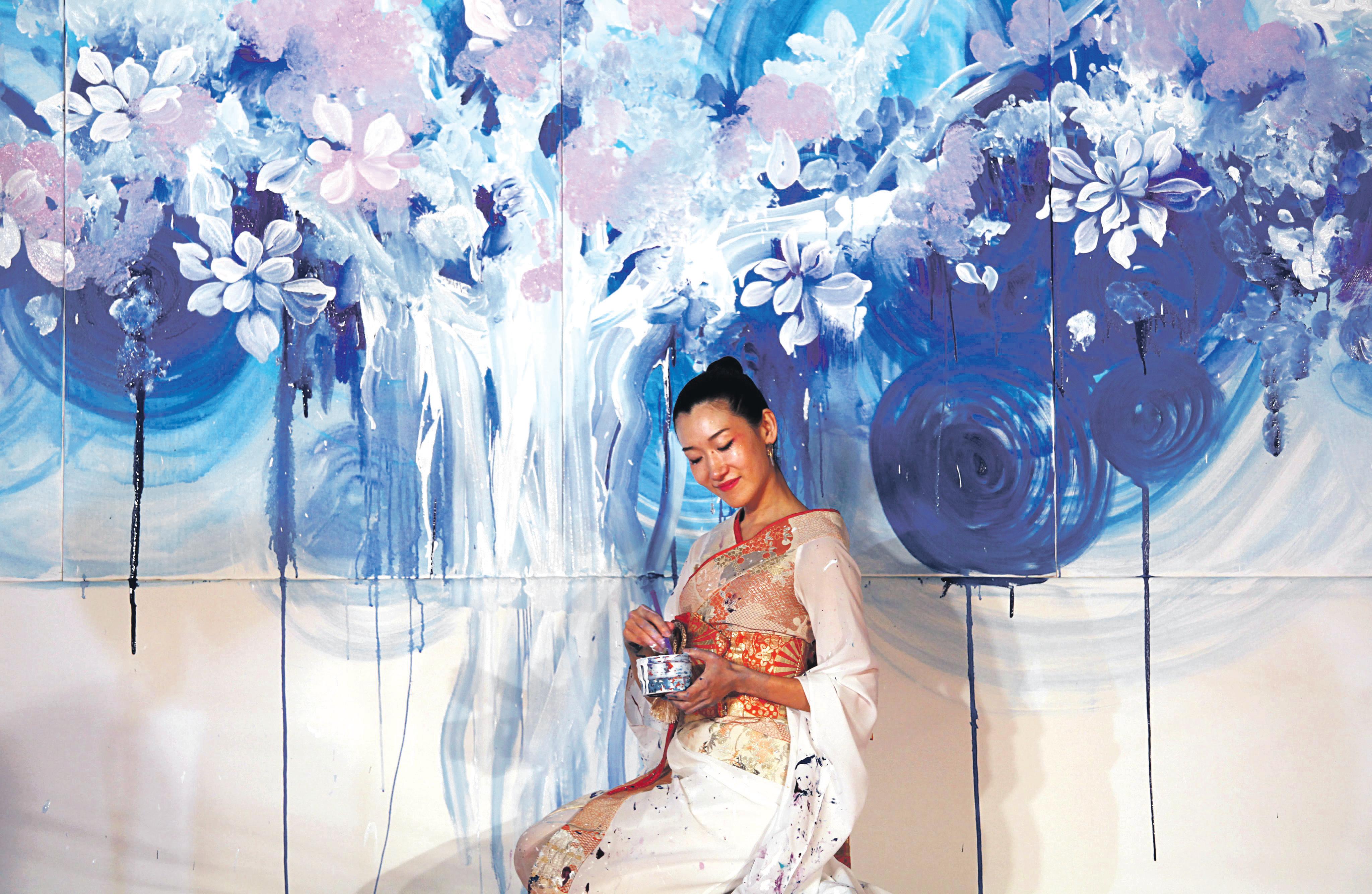
“COMET consisted of a control room used to collect mobile phone numbers of around 1.1 million government officials on poll duty and helped us coordinate with them. The sms-based monitoring system has reduced the workload tremendously,” Shukla said.
According to the official, the new system uses coded text messages through mobile phones to collect data about officials, information about scheduled events like staff reaching the polling station, mock poll conducted, start of polling, voting percentages every two hours, number of voters in queue after voting time was over, and whether the poll party reached safely at the high security Electronic Voting Machine (EVMs) deposit centre.
“Officials on the ground just need to punch in a few letters to send various coded SMSes. The information is instantly available online and can be used by the commission and poll officials in the state capital and districts,” Shukla said.
In case of an unforeseen event such as malfunctioning of EVMs, problems in the voter list or a law and order problem, the system alerts the superintendent of police and the police inspector of the area concerned through an sms.
“When a law and order problem is reported, quick response of the police and the commission matters a lot,” said Shukla. Information related to the scheduled and unforeseen events is relayed to all the poll officials deployed in a particular area, he said. However, in remote areas, where the mobile phones don’t work, oll officials have to reach the nearest telephone to inform the call centre located in the state capital. IANS
JANUARY (1) 2013 29 NATIONAL EDITION Photo: AP INDIAN NEWS
Japanese artist Saori Kanda creates her ‘music-inspired’ painting on a larger-than-life canvas while also dancing during International Art and Cultural Folk Festival in Kolkata on January 7. Organised by the NGO Karigar Haat, the festival features folk art and culture from different countries.
30 JANUARY (1) 2013 www.indianlink.com.au 1 New Year’s Day* 13 Makar Sankranti 14 Pongal 18 Guru Gobind Singh Jayanti 25 Milad-Un-Nabi 26 Republic Day / Australia Day* 28 Australia Day holiday* 15 Vasant Panchami 25 Guru Ravidas Jayanti 6 Labour Day QLD* / May Day NT* 9 Rabindranath Tagore birthday 12 Mother’s Day* 2 Gandhi Jayanti 7 Labour Day SA NSW ACT* 13 Vijayadashmi/Dussehra 1 Father’s Day* 9 Ganesh Chaturthi 16 Onam 30 Queen’s Birthday WA* 24 Hazarat Ali birthday 25 Buddha Purnima 26 National Sorry Day* 16 Bakrid 22 Karvachauth
10 Queen’s Birthday (most regions)* * Australian holidays and observances Disclaimer: Please check accuracy of religious holidays closer to the dates specified
INDIAN CA
JANUARY (1) 2013 31 NATIONAL EDITION 4 Labour Day WA* 10 Mahashivratri 11 Labour Day VIC* / Eight-Hour Day TAS* 27 Holi 29 Good Friday* 30 Easter Saturday* 31 Easter* 1 Easter Monday* 11 Ugadi/Gudipadwa 13 Vaisakhi/Vishu 15 Bihu 19 Ramnavami 24 Mahavir Jayanti 25 Hanuman Jayanti / ANZAC Day* 3 Diwali 5 Melbourne Cup* 11 Remembrance Day* 13 Gita Jayanti 24 Christmas Eve 25 Christmas* 2 Jamat-Ul-Vida 9 Id-Ul-Fitr 15 Independence Day 18 Parsi New Year 20 Rakshabandhan 28 Janmashtami 10 Rath Yatra 22 Guru Purnima 14 Muharram 17 Guru Nanak Jayanti 24 Guru Teg Bahadur’s Martyrdom day 26 Boxing Day* 31 New Year’s Eve* www.indianlink.com.au 18000 15 8 47
Cricket and the Taliban
An uplifting novel about sport and life under a strict religious regime
By CHITRA SUDARSHAN


In The Taliban Cricket Club (Allen and Unwin) is a novel by Timeri Murari. It is a love story set in Kabul in the year 2000 during the period of Taliban rule, when the country was known as the United Emirates of Afghanistan. It centres on the life of a young woman, Rukhsana, a journalist using a male pseudonym to describe life under a religious dictatorship. For women in Afghanistan during this time, there was an edict issued by the Taliban that they should only be seen in the home and in the grave. But life for young men also changed radically; there was little opportunity for work and the only schools open were the religious madrassas. Entertainment – from music and movies to wedding celebrations – were banned under

Taliban rule and the only sport permitted was football. But to improve their image, the Taliban made real historical efforts to have Afghanistan accepted as an affiliate member of the International Cricket Council – a true story – a move that was supported by the Taliban at the time. In 2000, the Taliban revised its restrictions on sport in Afghanistan and decided to allow men to participate in cricket. It was an attempt to show the world that they could play fair too. A year later, the Afghan team began competing internationally. Murari spins this historical detail into a bold and uplifting novel about sport and life under the Taliban.
In this novel, the Taliban plan to create a cricket team, holding a tournament and flying the winning team to Pakistan to train.
Rukhsana seizes the opportunity to help her brother and male cousins escape their dangerous and oppressive country. She played cricket for her university’s female team in Delhi and sets
about coaching the men. If they form a cricket team and win, they can leave Afghanistan and never return. Although the plot is a bit far-fetched, the description of life under the Taliban – and cricket in Afghanistan – are brought to live with warmth and humour.
Timeri N Murari is an award-

In 2000, the Taliban revised its restrictions on sport in Afghanistan and decided to allow men to participate in cricket
Although the plot is a bit far-fetched, the description of life under the Taliban – and cricket in Afghanistan – are brought to live with warmth and humour
winning writer, filmmaker and playwright who began his career as a journalist at The Kingston Whig Standard in Ontario, Canada. TIME magazine chose his film The Square Circle as one of the top ten of the year. He has published fiction and nonfiction, and his bestselling novel
Taj, a story of Mughal India, was translated into twenty-one languages. In 2006, he published a memoir, My Temporary Son, exploring his relationship with a desperately ill orphan. Murari now lives with his wife in his ancestral home in Madras, India.
32 JANUARY (1) 2013 www.indianlink.com.au BOOKS
A traumatised world welcomes the New Year
with his or her German counterpart.
BY noel g de soUZA
Much of the world anticipates the New Year with both relief and hope. The year 2012 has seen unprecedented environmental and financial disasters. Both India and Australia have had their fair share of problems which followed such disasters; there has been considerable anxiety in both these democratic countries, an anxiety which has been tempered by a give-andtake with regard to new and urgently required legislation and action.
Amongst the biggest disasters in the world has been the megastorm which battered New York and the neighbouring states in the USA. An unprecedented dissemination of information round-the-clock followed, with major safety precautions. These helped in lessening the storm’s disastrous impact. Such systems need to be put into place where there is history of storms and floods, such as along the east coast of India and in the Ganges delta.
The latest unemployment figures (November 2012) are depressing. Overall, the European Union’s unemployment figure is 12%, but in individual basket cases like Spain the figure is over 25% with even worse figures for the young age groups.
During the world’s multiple turmoils, Australia has done quite well thanks to its mineral wealth. But the loss of industrial jobs and the difficult task of making its tourism attractive calls for a lot of innovation and adaptation.
On the industrial front, both Australia and India have seen the loss of what were once considered as secure jobs.
inTERnATionAL CLAiRVoYAnT/SpiRiTUAL HEALER MR MAnE

There have been floods in 2012 in various parts of India and Australia, all with very damaging local effects. The effect on individuals has been often catastrophic. Nevertheless, during such trauma, people have shown the best sides of their character by flocking to help those in need.
The financial side has been no better. On the industrial front, both Australia and India have seen the loss of what were once considered as secure jobs. Again, affected families have needed help and were given some (maybe not sufficient) support by governments and friends.
The world wants to see a better New Year but it goes into the New Year with important items of business remaining unfinished. The threat of a dreaded American ‘fiscal cliff’ in the USA might not ultimately eventuate as both the Democrats and the Republicans appear at times to be close to a compromise which could yield fruit before this article goes to press. But at other times, their positions appear to be entrenched and far apart as ever.
There is, on the other hand, little optimism with regard to the monetary crisis in Europe with failure written large at every meeting held till now. The demand for ever- increasing austerity measures could result in the proverbial straws which ultimately break the camel’s back. This is particularly the case with Greece where wage levels have fallen so low that at last the Greek worker might be able to compete
Australia’s natural world has a fabulous record of adaptation. Its vegetation, for example, has adapted itself to extensive droughts by developing foliage which stores moisture and oils. But, in the process, its oil content makes it vulnerable to extensive bush fires.
New Year is a time for giving gifts. In India, Diwali, the festival of lights has similar connotations to the western New Year. At both these festivals, giving gold presents has been a custom within Indian families. Such familial jewellery hoards could well help in times of need. However, this year the astronomical price of gold in India (over Rs32,000 per ounce) might well mean the end or a dilution of that custom for many families.
The New Year is also a time for making resolutions. Many of these are notorious for being individualistic such as, “I will quit smoking” or “I will stop drinking and therefore I’ll avoid drinking friends”. However the real requirements might well be at a higher level. One can resolve to adapt oneself to changing conditions. But then changing conditions force people to adapt anyway. The better resolution would be to foresee possible changes which may be coming, and make oneself ready for such eventualities when they occur.
As the New Year approaches, a variety of predictors become busy as they launch into foreseeing what might lie ahead in financial and political spheres. Financial gurus and political pundits can do roaring trade with exclusive newsletters. Astrological prophecies about possible events in the New Year are mostly confined to specialist magazines.
Some might dismiss astrologers as charlatans who make a living through scams. But one famous predictor, who named himself Cheiro, stands out for some very astounding predictions. He predicted the partition of India between Muslims and the followers of the Buddha in 1925. India did choose the Buddhist chakra and the Ashoka pillar as its symbols! With the people of India and southeast Asia, let’s join hands in a heartfelt ‘Namaste’ as we greet 2013.
THE MAN YOU CAN TRUST WITH HIS NATURAL GOD GIFTED POWER OF SECOND SIGHT.
SUCCESSFULLY HELPING DESPERATE PEOPLE FOR THE PASSED 25 YEARS.
Specialist in relationship, Bringing back love one, Good luck, Success in business, Sexual difficulties, Court cases, Marriage and family problem, Master of removing all problems
100% GUARANTEED-PRIVATE AND CONFIDENTIAL DONT SUFFER IN SILENCE
ASTONISHING RESULT IN 24HRS
CAll on 0406 032 635 or 0405 614 938

JANUARY (1) 2013 33 NATIONAL EDITION Suite 1, 71 A Macquarie street, Parramatta. Phone: 0411 520 546 02 9687 9741 For expert coaching in • Money completely refundable, if not satisfied with the first tuition session. • Lowest fee Guaranteed. • Power packed sessions *Conditions apply ( enquire before enrolling). ENGLISH GURU www.englishguru.com.au IELTS Guarantee Course* or One / Two Weeks Crash Course Enrol today in the Band Score
opinion
As 2013 approaches, citizens of the world can only hope for change for the better and an end to unfinished business of 2012
Chennai Charms of
The traditional and historic blends beautifully in this vibrant, culturally superior city



incorporate the ancient port city of Mylapore.

 By PeTRA o’NeIll
By PeTRA o’NeIll
Determinedly I strode out beyond the gates of the historic Connemara Hotel in Chennai, leaving cocooned comfort behind me while stepping onto a noisy, busy street. I had not been to Chennai before; however, aiming north, I caught a bus that ended not as I had hoped near my destination, but at a bus terminus some distance away. The day was very hot.
Previously known as ‘Madras’, Chennai, the capital of Tamil Nadu was an area of fishing villages until 1639, when the British East India Company established Fort St. George, providing the British with their first foothold in India on a piece of land given by the Raja of Chandragiri, the last of the Vijayanagar rulers of Hampi.
A treasure trove of colonial architecture, Regency and IndoSaracenic styles are particularly evident in the city, and Chennai now extends as far south to




My day of sightseeing commenced at Fort St. George, a vast complex comprising the Secretariat and Legislative Council Chambers, with impressive entry gates, barracks and a Fort Museum, one of the most compelling places in Chennai to visit, with coins, medals, grand portraits and quirky items including massive iron padlocks. St. Mary’s Church is the oldest Anglican Church east of the Suez. This charming whitewashed church built in 1678 is located close to the former home of Robert Clive, who fought the French in a series of battles. Beyond is a magnificent Regency-style building that houses the state police headquarters.
I then walked to the grandest of buildings, the red brick High Court at Parry’s Corner built in 1892, and the world’s second largest judicial building after the Courts of London. Fully robed barristers strode hurriedly to court from chambers. Across the street is Georgetown, a hub of activity with entire streets selling nothing but one type of wholesale goods such as spare parts or stationery.
I glanced south to Mylapore along Marina Beach, the long
stretch of sand that is Chennai’s favourite outdoor recreational space. The sun was intense and the distance was too far to walk. Marugan, an affable auto rickshaw driver, was strategically placed to pick me up. We sped off to St Thomas Basilica built over the tomb of St Thomas, one of the 12 Christian apostles who came to India in 52AD, lived in Mylapore and died as a martyr in 78AD. From here I visited the massive Sri Ramakrishna and Sri Parthasarathy temple dedicated to Krishna, originally built in the 9th century by the Pallava dynasty with later Chola additions, and the Kapaleeswarar temple dedicated to the Hindu God Lord Shiva. While originally built in the 8th century, it was largely destroyed by the Portuguese and rebuilt by the Vijayanagar kings during the 16th century.
I ended my day at Higginbothams, an atmospheric bookshop with whirring overhead fans and piles of dishevelled books stacked high.
My purchase, a street map, was carefully processed, wrapped neatly and placed in a bag with a detailed invoice.
At my hotel, Giggles – The Biggest Bookshop, has been operating for over 30 years by Nalini Chettur. She shared with me many delightful stories of Chennai and introduced me to many of her friends and loyal clients who were passing by.
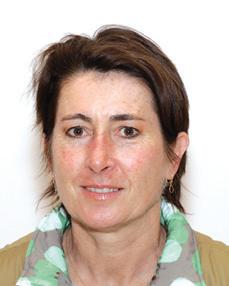
The next day I walked to Egmore Railway Station, immensely impressive with its towers capped with domed pavilions. Kennet Lane, the busy commercial area opposite has restaurants, shops, money exchanges and internet cafes.
Nearby is the imposing St. Andrew’s Kirk, consecrated in 1821 with a circular nave, rich woodwork and fine stained glass. It was Sunday and the church was filled to capacity.
The Museum and Art Gallery is deserving of several hours.
Miniatures include fine portraits and elaborately carved ivory including caskets, carved with intricate patterns. The Bronze Gallery has one masterpiece after another with sculptures from the Chola dynasty dating from 850AD, the jewellery and headdresses are extraordinary, and the figures so gracefully posed that they convey a sense of movement.
Chola dynasty and the great age of bronze, the third and fourth centuries witnessed the triumph of the Pallava dynasty when sculptures were made of stone. The collection provides a perfect introduction for visiting the great temples of southern India.
Next morning, I was picked up by my driver Guna. We drove south-bound for Mamallapuram past the Madras Club and the Adayar River, along broad, majestic tree-lined avenues including TTK Road with large mansions and well-tended gardens.
Chennai, India’s fourth largest city is a pleasant, liveable city, a mix of modern and historic, far less congested or polluted than other cities of comparable size. The night before my departure, on returning to my room I found a large black box. Inside was my laundry: three shirts neatly pressed and folded between layers of tissue paper. In Chennai, people are welcoming, unhurried and take that extra bit of care.
That, for me, made my stay more memorable.
TRAVEL
Travel noTebook
C H e NNAI
GETTING T h E r E
Singapore Airlines, Malaysia Airlines, Air Asia and Jet Airways fly to Chennai.


GETTING A r OUND
While public buses are frequent and inexpensive and auto rickshaws are numerous, I’d opt for hiring a car and driver such as Welcome Tours and Travel, Tel: 91-44-284-606-77 Email:agnesh@vsnl.com Website: www.allindiatours.com. If you are unable to do the temple circuit to view Chola temple architecture, do visit Mamallapuram with a lunch stop at the Vivanta by Taj - Fisherman’s Cove, Covelong and then onto Kanchipuram.



W h EN TO GO
Avoid the very hottest months – best is December to February.
ACCO m ODATION
The Vivanta by Taj - Connemara is centrally located and offers comfortable accommodation with contemporary decor or heritage rooms steeped in history. Email: vivanta.connemara@tajhotels. com /website: www.vivantabytaj.com. A good moderate hotel is the Hotel Victoria, email: victoria@ empeehotels.com /website: www.empeehotels.com
DINING OUT
Tamil Nadu has one of the most flavoursome regional cuisines in India. The traditional style of cooking called Chettinad mixes curry leaves, tamarind and anise. Hot pepper is used liberally. Chennai boasts hundreds of fast lunch cafeterias where you can enjoy a thali or Tamil staples such as idli, dosa and vada. The excellent Saravana Bhavan has a chain of them. Recommended is the Raintree at the Vivanta by Taj - Connemara, atmospheric with classical musicians and dancers.
S h OPPING
Nalli, synonymous with silk, was established in 1928 with several outlets in Chennai. Nalli Silk Sarees, 100 Usman Road, T Nagar. Email: nalli100@nalli.com /website: www.nallisilk.com. For bookshops, Giggles - the Biggest Bookshop at the Vivanta by Taj - Connemara and Higginbothams are recommended.
m O r E INFO rmATION
Tamil Nadu Tourism, email: info@tamilnadu-tourism.com





India Tourism, Glasshouse Shopping Complex, Level 5, 135 King Street, Sydney Tel: 02 9221 9555 email: info@indiatourism.com.au


A treasure trove of colonial architecture, Regency and Indo-Saracenic styles are particularly evident in the city
Chennai, India’s fourth largest city is a pleasant, liveable city, a mix of modern and historic, far less congested or polluted than other cities of comparable size
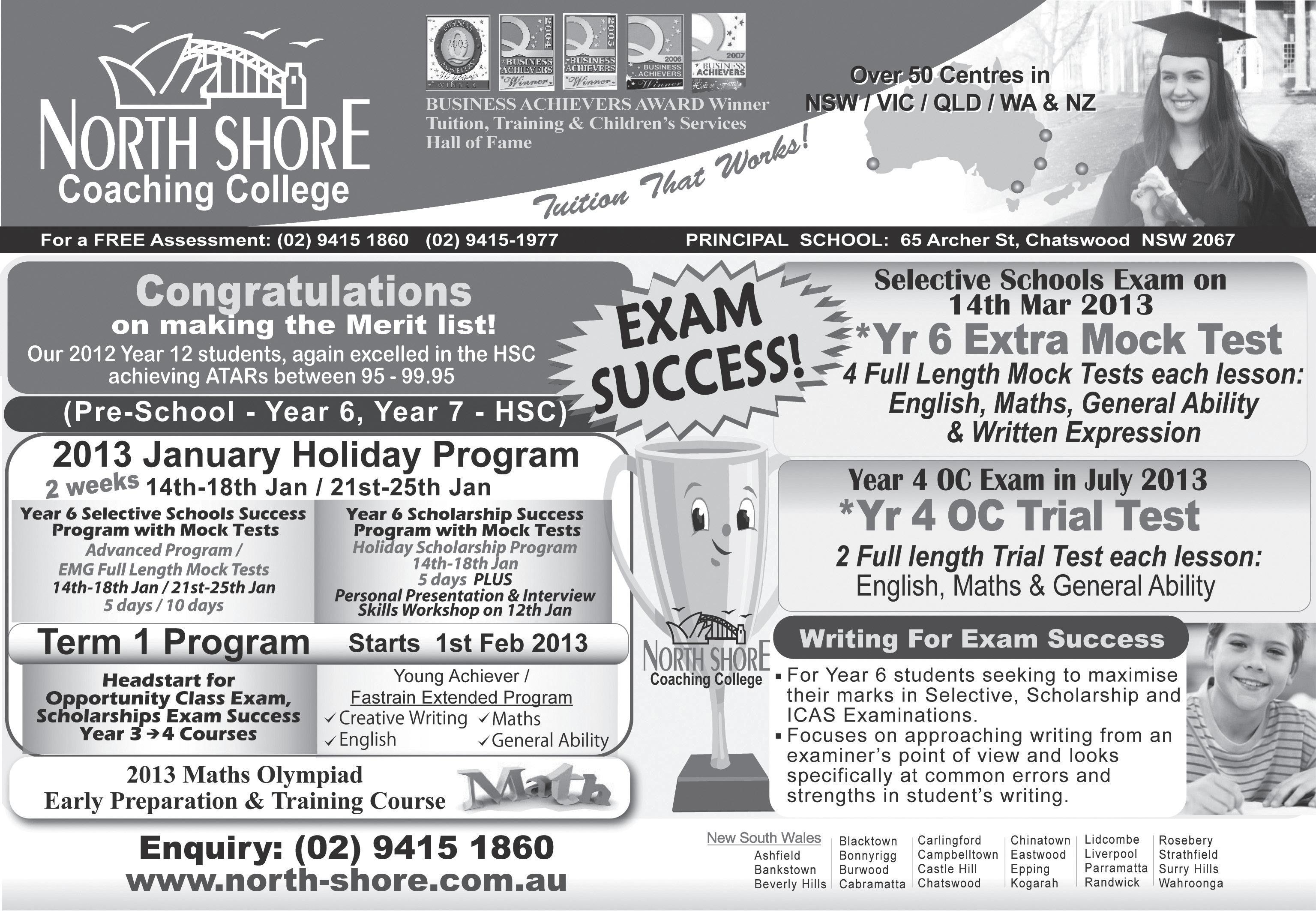

36 JANUARY (1) 2013 www.indianlink.com.au
15 Tips for a healthy New year
After the holiday season, its time to get back into the routine of healthy living
 y geeTA KHURANA
y geeTA KHURANA

Most of us have ‘healthy eating’ or ‘losing weight’ as a New Year resolution, but it is easier said than done. Making such resolutions is easy, but it is more difficult to actually stick to these. But sometimes, even small changes go a long way in helping us maintain a healthy lifestyle. So let’s review healthy tips for the New Year and try to stick to as many as possible.
1 Try to follow ‘The Australian Guide To Healthy Eating’, the food selection guide that provides us with information about the types of food that need to be eaten each day to get enough nutrients essential for good health and well-being.
2 Include a variety of foods across and within the five food groups namely:
Bread, cereals, rice, pasta, noodles
Vegetables, legumes


Fruit
Milk, yoghurt, cheese
Meat, fish, poultry, eggs, nuts, legumes
3 Try to include all the food groups in your daily diet, as all these food groups are important. Skipping one or the other food group may lead to deficiencies and an unbalanced diet.
4 Do not skip any meal. Try to have small and frequent meals. Have 3 regular meals, and try to have 3 small in-between snacks.
5 Snacking is not always bad, if you choose the right foods to snack on. In fact, snacks can help to fill the gap between your meals and prevents you from having larger portions at meal times. Some examples of healthy snacks would be fruit, low fat yoghurts, nuts, dried fruits, salads, sprouts, etc.

6 Go for ‘2 & 5’, which means that you should try to have at least 2 serves of fruit and 5 serves of vegetables every day. It is good to include a variety of fruit rather than just sticking to one particular fruit, and also include a rainbow of vegetables i.e. those of all colours in your diet. Fruit and vegetables are among the healthiest of all foods with an abundance of vitamins, minerals, phytochemicals, fibre, and antioxidants. Eating a good combination of red, orange, yellow and green fruit and vegetables is a great way to ensure adequate levels of nutrition.
7 Include more of low GI carbohydrates in your diet.
The Glycemic Index ranks carbohydrate rich foods according to their glycemic response. Foods that raise your blood glucose level quickly have a higher GI rating than foods that raise your blood glucose level more slowly. The lower the rating of GI, the better the quality of carbohydrate. For example, choose wholegrain cereals and pulses such as multigrain bread instead of white bread.
8 Meat and poultry are an important part of our diet, but these are also sources of saturated fat. It is very important to look for lean cuts of meat to get the maximum benefit of iron and protein, and reduce the intake of saturated fat. Chicken breast is the leanest part of the chicken and is an excellent choice. Try to add some fish in your menu, as it is a good source of polyunsaturated or ‘good’ fat.
9 Oils and fats are an essential part of our diet and should not be ignored, but should be had in moderation. Include monounsaturated or polyunsaturated fats rather than saturated fats such as butter, ghee, and cream. Monounsaturated fat is found in foods such as avocados, almonds, cashews, peanuts, and cooking oils made from plants or seeds such as sunflower, canola, soybean, olive, sesame and peanut. Polyunsaturated fat (omega-6) is found in foods such as fish, margarine, linseed, sunflower and safflower oil, pine nuts and Brazil nuts Polyunsaturated fat (omega-3s) is found in oily fish such as tuna, salmon, sardines and blue mackerel, as well as walnuts and linseed.
10
When eating out, try looking for lighter options and where possible, choose steamed, poached, boiled or baked foods rather than those that have been fried. Many restaurants have lighter options on their menus these days, some have lowfat options and some even offer low-carb foods. Also, try to share an entree or dessert with a family member and order smaller sizes of portions high in fats such as fries, chips or fried chicken. Try to choose healthier side orders such salads and corncobs.
11 Do not keep goodies that you cannot resist in your pantry. Instead,
substitute these with healthy snacks such as nuts, unsalted popcorns, yoghurt and fruit. Keeping chocolates, lollies, soft drinks and other tempting goodies at home makes eating them inevitable.
12 Keep goodies as ‘treat’ foods for birthdays, parties and festivals.
13 Drink alcohol in moderation, not more than four standard drinks in a day for men, and not more than two standard drinks in a day for women. And try to keep at least two alcohol-free days in a week. Drink water between alcoholic drinks to avoid dehydration.
14 Water should always be the drink of your choice, especially during hot weather and while exercising. Have at least 2 litres of water every day. Avoid high kilojoules drinks such as soft drinks and cordials.
15 Prepare a sensible exercise routine to stay healthy. If you live within walking distance of the shops, walk there instead of driving, or walk your kids to school. Walk for at least half an hour daily, instead of watching TV. Going for a half-hour walk can help you de-stress, clear your mind and set you up for a relaxing evening and a great night’s sleep.
NATIONAL EDITION
WELLNESS
Cricketing conundrums
By RITAM MITRA
They say revenge is a dish best served cold. For the Indian cricket team in November 2012, revenge turned out to be a particularly lukewarm collision between eggs and their faces. For two consecutive away Test series, the spectators, fans and even the opposition were assured that India’s poor performances away from home were attributable entirely to pitches, unruly crowds, bad luck with umpiring, and bad luck in general due to the misalignment of the planets. We promise, once said a left-handed Indian opener - who shall remain nameless to spare him the embarrassmentthat we shall welcome you to India with rank turners and expose your flawed techniques in the same way you have exposed ours. Unfortunately for team India, that player’s prophecy was left thoroughly unfulfilled.
The Pataudi Trophy
Rewind just 18 months. That’s all it’s been since India, the world number one Test team, reigning ODI World Champions, toast of the town and apple of their fan’s eyes, were in England for the start of a very long trip down from the top of the tree. The nature of India’s 4- defeat in the Pataudi Trophy was staggering to say the least, and it’s easy to forget the numbers. Here’s a reminder - England’s smallest margin of victory was by 196 runs in the series opener. From there on, the results read: England by 319 runs, England by an innings and 242 runs, England by an innings and
122 runs), the rest of the tour was miserable – the differences being an innings and 68 runs, an innings and 37 runs, and 298 runs. For Virender Sehwag, it was all home advantage. “We also won 2-0 in India,” he said as India looked at the real possibility of two away series whitewashes in a row.
England in India: 2012

So then came the feted ‘revenge series’. Media outlets, team coaches, BCCI administrators alike, all assured us that the Indian team was fired up, ready to pounce and return the favour to England. And from the first match, it seemed as though everything was going to plan – India piled on the runs, Sehwag returned to his best on the flat, slow deck, and India won by 9 wickets after their spinners claimed 13 of the 20 England wickets.
However, for Dhoni the Ahmedabad wicket was not good enough. For an international captain to complain so incessantly about the decks he is given to play on is nothing short of embarrassing. Steve Waugh, the
India some home advantage and to ensure that the toss isn’t such a crucial factor.
Dhoni got everything he asked for in Mumbai. The pitch was turning and spitting from day one. India played three spinners. He even won the toss. Yet India capitulated by 10 wickets. The third Test Kolkata was hardly better – India lost by 7 wickets, after Dhoni had a much-publicised stand-off with – you guessed it –the curator of the pitch, 83-year old Prabir Mukherjee.
That the final match in Nagpur was a draw was, ironically, probably due to the deplorable pitch. For the Nagpur pitch to be deemed good enough for international cricket was a blight on the ICC and the BCCI together. After day one, England, with an exciting batting line up including strokemakers such as Kevin Pietersen, Ian Bell and Jonathan Trott, were only able to make 199 runs in 97 overs. With Test cricket in a small crisis as it is, the last thing administrators of the game needed was an advertisement like this.
sacrifice required for a change of innings) or a hunt for quick runs would have been the only logical approach for another side. India went on to surrender in a thoroughly pointless draw, surrendering a series to England for the first time on home soil in 28 years.
It’s an attitude thing
The main problem for many is not India’s performance, but their attitude towards it. There is a worrying culture of selfimportance and indifference amongst a number of Indian cricketers, and it’s beginning to manifest itself on the field. For once, it would be refreshing to hear MS Dhoni say, “We were not good enough. Our techniques were exposed. We’ll work on this, this and that and we won’t stop working until we get the results.”

Instead, there’s always another factor. “I think the major difference between the two sides was James Anderson who bowled very well,” said the Indian skipper after the 2-1 series loss. “There were a few positives and a few
poor reading.
Sehwag: 30. Gambhir: 31. Kohli: 38. Tendulkar: 34. Yuvraj Singh: 26. Dhoni: 31. Yuvraj was dropped before the Nagpur test, but averages 33 in a career of 40 Test matches. He has been given 30 Tests too many.

Meanwhile, some unlucky losers are forced to wait in the wings, even while tearing up the Ranji Trophy season. These include Manoj Tiwary, averaging close to 60, Parthiv Patel, averaging almost 80 while captaining and keeping wickets, as well as Wriddhiman Saha, who impressed in Australia and is averaging over 50 with the bat.
India’s highest wicket takers in 2012, meanwhile, were Ravichandran Ashwin (37 wickets at 37.75), Pragyan Ojha (33 wickets at 26) and Umesh Yadav and Zaheer Khan, averaging 42 and 50 respectively, per wicket. That the latter is the Indian attack’s “spearhead” is somewhat revealing.
The fact of the matter is, India is a bad side. Their bowling is weak, and marks a sharp decline in
38 JANUARY (1) 2013 www.indianlink.com.au
S p ORT
The need to resuscitate the Indian cricketing team’s performance grows urgent as the season progresses, but who’s listening?
the resurgence the Indian quicks demonstrated in the 2007/08 Australia tour. The fielding is deplorable, but for the first time in recent memory, the batting also looks brittle.
Bowling and fielding
India’s bowling will only ever improve significantly when it shies away from the “turning dustbowls” mentality in the preparation of pitches. And it is not impossible to grow grassy pitches in India. At least a few domestic tracks should be made fast enough to be representative of South African, Australian and English pitches. It is not by bad luck that India does not have a bowler who can bowl fast, or a bowler who can pitch the ball in the further-away half of the pitch. It is purely by design. India may well prefer to bring touring teams to turning tracks – and that is perfectly fine – but some domestic tracks need to be fast and provide assistance to the bowlers. The bowlers will be better for it, and the batsmen too. The fielding will improve as the youngsters come in – Pujara and Kohli are livewires in the field, and Tiwary and Saha, surely due their chances soon, are also fantastic. Tendulkar aside, the rest of the Indian side’s fielding was quite ordinary.
Batting
India’s test match batting at the moment is characterised by a lack of focus, patience and accountability. There is a desire to score quickly – at any cost. Aside from Pietersen’s phenomenal 186 in Mumbai, all of the centuries in the series were the result of hard work. Batsmen in Test cricket are rewarded for spending time at the crease – Alastair Cook and
Dhoni caught on – far too late –in Nagpur. Batsmen need to put more of a price on their wickets, and keep the opposition out in the field for as long as possible.
Rahul Dravid would be a fantastic mentor to the players – especially the younger ones coming through. Meanwhile, common sense has to come into play with selection.
If batsmen are not performing, they cannot be given an extended run – whatever their potential. Tendulkar, nearing 40, made the decision to retire from oneday internationals just before Christmas. His announcement led to tributes pouring in for a man who was the master of building a one-day innings. Although he will be sorely missed, and there is definitely still no match for him in the one-day arena – he should have made the call to retire altogether. Tendulkar already left this first instalment too late - after
Cup win would have been a perfect time to draw the curtain. Indeed, even after the 100th international century he might have decided to call it quits. The bottom line is, what more does Tendulkar have left to play for, even in tests alone? Team India is bigger than one person, whoever that person may be.
The future
The 2013 Indian Test XI should begin with: Rahane, Gambhir, Kohli, Pujara, Tiwary, Saha, Ashwin, Ojha, and Yadav. India needs to source two more genuine fast bowlers – Dinda is not a solution – to finish the XI, while working on Yadav’s fitness and length. Ravi Ashwin is more of a batsman than a spinner, and he is definitely not the frontline option. Meanwhile, Dhoni should definitely retain his place in the ODI side, but his keeping and batsmanship are not up to the
India’s bowling will only ever improve significantly when it shies away from the “turning dustbowls” mentality in the preparation of
scratch in the longer format.
Indian cricket is at a crossroads. The people who run it can choose either to put a bit of plaster on its weaknesses or – strip it down, tear it apart and poke at every single thing that’s wrong with it, then build it up from scratch with a long-term plan for success.

To those administrators: we know it’s not always easy to make the tough decisions, and running cricket in India isn’t the easiest gig. You’ve seen the team through to its first World Cup win in 28 years, yet you have to deal with a Test team in transition, having lost some greats of the game. Your players aren’t performing on or off the field. You’re probably starting to lose confidence in the skipper. But you’re being paid obscene amounts of money to make this national team the pride and lifeblood of a billion people. Are you listening to them?

The fact of the matter is, India is a bad side. Their bowling is weak, and marks a sharp decline in the resurgence the Indian quicks demonstrated in the 2007/08 Australia tour
Meanwhile, common sense has to come into play with selection. If batsmen are not performing, they cannot be given an extended run – whatever their potential
JANUARY (1) 2013 39 NATIONAL EDITION
Pakistan whips India by five wickets in the first T20 thriller in a jam-packed Chinnaswamy stadium.









JANUARY (1) 2013 41 NATIONAL EDITION
Marchesa and the spirit of India









Rich embroidery and vivid colours bring a revival of the 1960s in India back to the fashionable present
and close to the body. There were gowns hugging the body before spreading out into a fish tail covered in embellishments.
BY TALIA KAUR
The recently concluded New York Fashion week left a lasting impression on fashion aficionados, but the one label on everyone’s lips was definitely Marchesa. A trip to the Indian subcontinent was all that was needed to inspire British design duo Georgia Chapman and Keren Craig for their spring/summer 2013 collection. Marchesa encapsulated all the beautiful colours, fabrics, detailing, embroidery and glamour of traditional Indian designs – and on a grand scale! The Marchesa runway show took place at a perfect setting to match their lavish designs: Grand Central Station… right in the middle of peak hour!
You may remember Vera Wang also drawing inspiration from India in her collection earlier in 2012. Whilst Wang used the influence to create intricate details and special features on each garment, Craig and Chapman took it to a much more literal level. The collection’s theme was ‘the spirit of India in the 1960s’, so that meant bringing back straight lines and sari-style drapery. It also offered a chance to showcase the wonderful beading and embroidery skills of India, and the vivid colour scheme, which presented the audience with a feel of the groovy cultural swing of the 60s.
Starting with the colours, they were varied but all appealing. It started off with a bright lime then moved into a vivid peach and orange, then vibrant fuchsia, red, burgundy, plum, and finally transitioning into midnight and teal blue. More simple white and gold looks were also integrated throughout the collection, to break up more empowering colours and focus more on simplistic garments with quality embroidery and detailing.
Hemlines were also diverse in length, with a compilation of mini and floor-length dresses –some with trains and some even with asymmetrical hemlines. In terms of shapes, the designers kept the lines quite straight
Midriffs paired with maxi skirts were also popular – could exposed midriffs be making a comeback into our summer wardrobes this year? I definitely think so!
The designers also allowed for a lot of draping. The chiffon dresses were draped exactly like a sarong and the gorgeous sariinspired dresses had draping over one shoulder and were paired with golden leggings covered in jewels. Metallic shimmer added light and culture to looks involving tops and detailed leggings and really portrayed the daring Indian fashion of the 60s.
All in all, the sparkling fabrics, embroidered garments and beautifully beaded details – all strongly resembling Indian culture – were used to create the wonderfully colourful and vibrant collection that are the signature Marchesa look.
42 JANUARY ( FASHION



JANUARY (1) 2013 43
Singapore seasoning
Spruce up your daily diet with interesting culinary recipes from the globally acknowledged mecca of cuisine
1 packet pre-cooked flat rice noodles
1 bunch spinach, washed and cut in 3cm length
BY MITAL PARIKH

Have you ever been bored of eating the same old sabzi and chapatti or rice and dal? No doubt after a long day, none of us have the energy to trouble our minds with new recipes. But we still want to eat something different and tasty without the hassle of spending long hours in the kitchen. So here are some easy-to-cook recipes from Singapore, the place known globally as the ‘food heaven’. Eating good food is a national pastime in this country and a common topic of conversation among Singaporeans, who are simply obsessed with eating. With a rich, multicultural heritage you are spoilt for choice when eating out, with a wide assortment of Malay, Chinese, Indonesian, Indian, Peranakan and western cuisines. Sometimes they are fused together to make up a unique dish! Eating out is a daily routine for Singaporeans with long queues outside famous hawker stalls during lunch or dinnertime. In fact, the majority even eat five to six meals a day and yet, the country is not on the list of obese nations! So try out these recipes and enjoy a taste of Singapore.
Char Kway Teow
This dish is made from flat rice noodles (kway teow) and is typically a hawker stall dish in Singapore and Malaysia. This spicy version of noodles can be prepared as soon as the ingredients are assembled. However, it is important not to overcook the vegetables and noodles, as this can affect the final flavour.

1 cup bean sprouts
1 cup sliced mushrooms
1 small hard cube of tofu
1 sliced red chilli
2-3 tablespoons dark soy sauce
2 tablespoons light soy sauce
1 lemon for serving
Oil for cooking and frying
2 tablespoons chilli paste
For the rough ground chilli paste:
2-3 fresh red chillies
4-5 cloves garlic
1 small piece ginger
1 tbsp lemongrass chopped
1-2 tsp sugar
2-3 tbsp vinegar or lemon juice
Salt to taste
Take the pre-cooked noodles from the packet and separate them. Dry the tofu by pressing it lightly between a muslin cloth or paper towel. Cut into medium-sized cubes and shallow fry in hot oil until golden brown. Drain excess oil on a paper towel. Next, fry the rough ground chilli paste in hot oil for a few seconds, then add the chilli and mushrooms, cook for a minute. Add the kway teow noodles, soy sauce, tofu, spinach and bean sprouts. Cook till all the ingredients are mixed thoroughly. Serve hot with lemon wedges on the side.
Fried brown rice
As we are all so health conscious nowadays and are constantly trying to lose weight, why not try this variation of fried brown rice? As a vegetarian, I substitute meat with mock meat (made from soy), which is commonly used in vegetarian Chinese cuisine.

2 cups Macro brand cooked brown rice
½ cup mock meat, char siu pork (available in the frozen section of any Asian grocery store)
2 cups chopped mixed vegetables of your choice
½ cup cooked bean sprouts
1 cup sliced mushroom
1 hard block of tofu, cubed and shallow fried
1 tbsp dark soy sauce
1 tbsp light soy sauce
Oil for cooking
Heat the oil on high flame in a non-stick pan and cook the mock meat till tender. Add the vegetables, stir fry for a few minutes till just tender, but still crispy. Once cooked, add the
brown rice, bean sprouts, soy sauces and tofu. Cover and cook for a few minutes till the rice absorbs all the flavours. Serve hot with chopped fresh red chilli in soy sauce on the side.
Tahu Goreng

This is a generic name for any type of fried tofu, commonly prepared in Indonesia, Malysia and Singapore. This dish is usually prepared at hawker stalls, with the fried tofu covered in a spicy-sweetsour peanut sauce which leaves a lasting impression on your tongue. Only the tofu needs cooking and the sauce can be made in advance and stored in the fridge, making it an easy meal to prepare. You can cook the tofu by steaming or shallow frying with minimal oil, for a healthier version.
1 block of fresh hard tofu (per person)
1 packet bean sprouts
1 continental cucumber, cut into thin triangles
2 cups peanuts, roasted and skinned
5-6 garlic cloves
2 fresh red chillies
1-2 tsp sugar or gula melaka (palm sugar)
2-3 tbsp fresh lemon juice or tamarind water
2-3 tsp dark soy sauce
For the peanut sauce:
Crush the peanuts coarsely in a grinder, ensure that the result is not too fine. Pound the garlic and chilli in a mortar and pestle. Mix together the crushed peanuts, garlic chilli paste, soy sauce, lemon juice and sugar. Add just enough water to create a pouring consistency for the sauce. Keep aside for an hour or two before serving.
Cook the tofu by steaming or frying. The traditional way of cooking tofu is by deep-frying the block and then cutting it into cubes, but you can use the healthier option.
Dip the bean sprouts in hot water for a few seconds and drain. Serve the cooked tofu with the delicious sweet and sour peanut sauce topped with cucumber and bean sprouts.
You could let the tofu sit on a thick paper towel or a muslin cloth, which will help absorb excess water to minimize splattering in oil. All ingredients for these recipes can be found in any Asian grocery store.
44 JANUARY (1) 2013 www.indianlink.com.au
FOOD


JANUARY (1) 2013 45 NATIONAL EDITION
Taking on a private tutor
‘Transfer-test’ tuition
BY MOHAN DHALL
Throughout the world, the use of private tuition as a supplement to mainstream schooling is growing. The phenomenon is occurring from places as diverse as India, Taiwan and Hong Kong to Mexico, Saudi Arabia, Canada and Portugal. Australian parents are also increasingly turning to tutors to support their children through their years of schooling. So, what motivates parents to seek a tutor, and when is it appropriate or not appropriate for families to seek the support of tutors?
Motivation for a private tutor
There are several reasons why parents seek the assistance of private tutors for their child(ren). This could be because the child needs remedial academic or learning support; or stimulus beyond that which is given by the school; a smooth transition for the child to move from one system to another, or to gain access to a particular school – so called ‘transfer test’ tutoring; to provide structured support for homework; to build self-confidence in the child; or when the school academic content is beyond the comfort level of the parent; and finally, to take some level of personal control of the outcomes of education
Remedial academic or learning support

A notable aspect of private tuition is the assistance parents know that it can give a child who is struggling to keep up, who has a particular learning style that is not well accommodated in the mainstream classroom or who finds particular academic concepts difficult. In this context, teaching and learning via a tutor can be tailored to meet the specific needs of the child.
Stimulus beyond school
A small proportion of parents find that schoolwork is not enriching enough for their child, who needs additional stimulus to ensure a continued interest in learning. Typically such parents may have children identified as ‘gifted’; however it might also be the case that the parent has a child whose learning needs are not be appropriately catered for at school.
“Transfer-test” tutoring may be defined as arising when the desire is for the child to move from one system (eg public) to another (eg private) or to gain access to a particular educational institution (eg academically selective school or university). The goal can be a significant motivator for a particular type of private tuition called ‘coaching’, ‘cramming’ or ‘hothousing’. Here the purpose of the private tuition is to achieve a particular goal or outcome. The parent may want their child to attempt particular tests (eg scholarship or selective schools tests, UMAT tests or other forms of entry test) with a view to gaining entry into a system or institution. Alternatively, the parent may also see that the investment in private tuition may save a lot of money later – such as private school fees.
Structured support for homework
Structured support can provide a source of steadiness, predictability and significant academic assistance to the child. The predictable nature of the engagement of a private tutor can help the child and also the family, manage and negotiate schooling over time. Reinforcement of concepts and content done at school are also desired by parents when taking on a private tutor, who should be well aware of the work that is done in the school. Reinforcement is likely to deepen understanding and also foster inquiry, which in turn can lead to deep knowledge.
Building selfconfidence
A most understated use of private tutors is that of confidence building. Often the tutor will tell the parent that the child’s understanding is fine but the child just ‘isn’t achieving’. Typically, the issue is self-confidence – the child has little self-belief. Thus, the role of the tutor is to help the child find confidence and self-esteem through affirmation, encouragement and reinforcement of the skills and knowledge required.
The parent’s comfort level
Sometimes parents who have been able to help their own child have reached a point where they feel like they no longer have the ability to help. This can arise by virtue of little time, or a lack of confidence in the parent with the specific content matter and outcomes being
covered by the child in school. This may be the case as a child progresses through high school, and may also arise with respect to problem solving for selective tests, scholarship exams and UMAT/ GAMSAT preparation.
Personal control of education outcomes
As the awareness of the importance of education and educational attainment increases, so too does the desire by parents to take personal control of the outcomes of education. That is, rather than simply rely on the school and teachers, the parents invest in making choices that they believe will help their child do their best as school and beyond. It is notable also that as incomes rise, the amount of discretionary income spent on private tuition can be as high as 30% in some families.
Inappropriate times to engage private tutors
Despite parents turning to tutors for a multitude of reasons, there are times when taking on tutors is not appropriate. For example, parents should first ask themselves whether the use of a tutor or extra classes is necessary. After all, sometimes a simple restructure of time can provide a child with the support they need from their own parent(s). Moreover, just because other children may attend private tuition classes is not a reason, of itself, to justify taking on private tutors. A further aspect to this is the
lazy or dependent child. A tutor should not be engaged simply because the parent cannot motivate the child. However, if the lack of motivation arises from poor understanding, disengagement, lack of self-confidence, a particular learning need or some such, then a well-chosen tutor may be very helpful.
What to look for in a private tutor
Parents need to be very careful when deciding to take on a private tutor for their child. Firstly they need to be able to articulate what it is they are seeking and why. Accountability for any chosen tutor begins with this. From this point parents should then determine whether the tuition should be one-to-one or in a class or group, and whether it should be outside or inside the home. Many people prefer the child to be taught outside of home as there may be more seriousness associated with an actual physical site where private tuition and/or classes are conducted.
There are several very important things that parents must consider when choosing a tutor, as follows:
• The tutor is appropriately qualified, skilled and experienced to tutor the child or if not qualified, openly discloses that they are not. University students will be unqualified but may be excellent tutors as they are closer in age to students and may well understand curricular requirements very well
• The tutor is clear about what
they can and cannot do, and their work is open to scrutiny

• The tutor seeks to make the child as independent as possible, rather than encouraging dependencies
• The tutor volunteers open and honest feedback about the tutoring and tuition sessions, including disclosing when the tuition is no longer beneficial
• The tutor communicates with confidence and helps the child to feel at ease
• The tutor has been properly screened by child protection agencies (such as having a ‘Working with Children’ check or a federal police check)
• The tutor comes to sessions prepared and considers the specific needs of the child, is reliable and consistent
Tutors and businesses to avoid
All parents should avoid tutors who do not have these characteristics. They should ask tutors and tuition businesses about their refund policy and whether they are members of the Australian Tutoring Association (ATA), the peak body for tutors in Australia.
In summary
Parents need to carefully consider the choices they make when it comes to taking on private tutors. They need to be prepared to ask questions and ensure that the tuition will be of benefit to their child. In this way the investment should be worth it.
46 JANUARY (1) 2013 www.indianlink.com.au
Sc HOO l
Some fundamental guidelines will help parents decide whether their child will benefit from private tutoring
Thus, the role of the tutor is to help the child find confidence and self-esteem through affirmation, encouragement and reinforcement of the skills and knowledge required
EPAPER
SUBSCRIPTION IS A SCAN

INDIAN LINk AwAY
Mr. Yaceen
African Spiritual Healer and Clairvoyant
Master of removing all sort of spells, specialist in relationships, bringing back loved ones, marriage & family problems, sexual difficulties, success in business, court cases, good luck and much more…
Quick and Guaranteed result in few days.
Call 0469 004 524
MAT R IMONIALS
Seeking grooMS
Match required for an issueless divorcee (legalised) Punjabi khatri girl, 31yrs, 5ft2in, BE(CS) MBA(HR), working in MNC(Pune,India), parents in India , brother and bhabhi working in MNC,Melbourne. tpkapur@yahoo.com, +91731-2594532,+91-9329026353
37 yrs old Brahmin never married graduate girl currently visiting Australia. Looking for Australian citizen preferably unmarried. Whole family settled here. Belongs to status business family. Applied for permanent residency earlier. Contact with photo and details urgently at npkhanna@ymail.com
Seeking suitable match, a non smoker, ideally aged between 50 and 60. For fair, young looking Hindu lady, 5’ 2”, 54, divorced, veg, Australian citizen. Caste no bar. Please contact 0449 623 316 or email alpine_ rhapsody@hotmail.com
Seeking clean shaven, well settled match for hindu punjabi beautiful, slim, fair, 29th july 81,5’5”, graduate(p.U.), Diploma in fashion designing. Traditional indian/western values. Working in sydney.
Two elder brothers, 1 is running own business in chandigarh with father and 1 in sydney running franchisee business.Own property in chandigarh. Contact: funny_ mints@yahoo.com +919417072965(India ) 0422669082( Sydney )
Seeking suitable match for Punjabi Hindu girl 27 years, well educated, living in India , with great eastern & western family values. Interest invited from qualified boys settled in Australia. Please contact on 0404 451 835.
Herbal Hair and Beauty (for ladies only)

Specialised from Overseas (Shahnaz Herbal) and Australia
• Threading • Hair cutting / Colouring / Streaking
• Waxing / Nail / Body treatment
• Beauty and Skin care • Simple Mehandi and Bridal Mehandi
• Wedding and Engagements packages (Indian brides) • Facials
Harvinder Kaur (Nenu)
Beauty therapist & Hair stylist
Look Good Feel G ood
Shop 3, 22 Henley Road (inside the Arcade)
Homebush West 2140
Ph: 8746 0400
0413 062 984
Respectable Sikh Family of New Delhi seeks alliance for their smart good looking sweet natured family oriented daughter 24/165cms, B.Com Graduate, Primary Teacher, looking for a well educated boy from a cultured family well settled in Business/Industry/Profession. Girl and Parents in Sydney from end December until mid January. Call 0431337881
Seeking BriDeS
Australian Citizen, Educated Indian man, late 40’s, seeking honest Indian lady for marriage. Email- tamavu@hotmail.com or call- 0424015249.
Match required for brother 50+, Hindu, divorced, Aust citizen, vegetarian, nondrinker, non-smoker, high family values from respectable family for marriage and lasting relationship. Seeks lady 35-45yrs, homely, polite personality, single, divorced, without children. E-mail photo with details: jyotij393@gmail.com

Seeking suitable match for a boy,6’ tall,31 yrs,never married,Australian Citizen,Athletic, Punjabi Khatri,reputed corporate professional. Please email your particulars with recent photo (Compulsory) on win.rocky@gmail.com or call 0430 179 273.
Compatible match for 1975 born, handsome clean-shaven Sikh Khatri boy, 5’ 9”, two PostGraduate degrees from India and recently finished Master in I.T from Australia . Currently on temporary resident visa and working fulltime in Customer Service role. Looking for welleducated, Permanent resident / Citizen girl from Sikh family background. Early marriage. Phone: 042210 2242 or Email: ghai07@yahoo.com
Shop 34, 74 Genesis Building
Rawson St, Epping 2121 (Entr y also via Beecroft Rd) Ph: 9868 4040 Mob: 0430 343 565
Monday closed Open from 10:00 am to 6:00 pm
COMPLETE MIGRATION SERVICES
(ABN- 91 761 820 052)
WORK, STUDY, LIVE IN AUSTRALIA, N EW Z EALAND, C ANADA
For queries on July’12 changes, Skill Select and Expression of interest call now at 0433 986 780 0421 119 628
Free consultation for 15 minutes or via email
i) Advice on Migration pathways
ii) General Skilled Migrationspecialist
iii) Student Visas( new and extension)
iv) State Sponsored Visas / ENS / RSMS / 457
v) Business Migration
vi) Partner and Family Migration specialist

vii) Admission in Australian Colleges and Universities
• MRT Review procedures in Australia
• OCI / POI / Indian Passport Application / Renewal
Migration Agents
We also specialize in Home / Commercial Loans (MFAA Certified) specialist
Contact:
Sonal Agrawal Syed
Mohiuddin (JP) Ex-Visa officer

MARN:1169617, MMIA:5385
Registration Number www.mara.gov.au 1169617
MARN:1171248, MMIA: 1021, MFAA:54385
Level 2, Suite 8A, 48 Macquarie Street, Parramatta, Australia 2150
PH (02) 86775161, FAX: (02) 98916314
Email: contactus@completemigrationservices.com.au
(We Speak English, Hindi, Marathi, Urdu, Telugu)
For quick visa assessment fill the online visa assessment form on www.completemigrationservices.com.au
We help you achieve a better life and pursue your dreams
JANUARY (1) 2013 47 NATIONAL EDITION
Mob:
Open 7 days Open from 9:30 am to 5:30 pm
Santa reborn
During the season of giving, the man in red makes a special sacrifice for the ones he loves
BY RANI JHALA
Rita limped her way into her lounge room and dropped the shopping bags onto the nearest couch. Her legs were aching, her back was sore and her throat was parched dry, but she was happy! Happy that she had finally completed her Christmas shopping and that the last of the gifts were now secure in her home.
Kicking off her low-heeled sandals, she walked barefoot into the kitchen. There she gulped down two glasses of water in quick succession. Then she returned, armed with a pair of scissors, tape, ribbons and gift tags. Carefully and lovingly she wrapped each gift and placed them under the magnificent Christmas tree.

Like her, the tree was old. It had been a regular feature in her home, until her youngest woke one Christmas morning to declare that there was no Santa Claus. After that, the Christmas tree served purely as an ornamental piece during the festive season. It was no longer the magical place where Santa left gifts.
It was only after the grandchildren came along that the tree was restored to its former glory. It was decorated with love and placed in the centre of the room where it shaded the many gifts under its glittering branches.
Now on another Christmas Eve, it once again stood tall and accepted each gift that Rita so lovingly placed near its trunk. When all the gifts had been wrapped and strategically positioned, Rita returned to the kitchen.
There she finished cooking the last of the dishes that were going to make up Christmas lunch - her special leg of ham, roast vegetables, Christmas cake, trifle, white Christmas, fruit mince pies and fruit punch. For the adults there were also rum balls, Christmas plum pudding and brandy sauce, mango daiquiri and Champagne punch.
By the time she had completed all the tasks on her list, it was almost five o’clock. She had just enough time for a quick shower
before her son came to collect her. The grandchildren had insisted that they all go to the Carols by Starlight. Now seated under the star-studded sky, Rita watched the joyous faces of her grandchildren as they clapped and danced to the songs. And at the happiness they expressed as Santa’s sleigh whizzed onto the stage. At midnight as the last carol was sung the air reverberated with the words ‘Silent Night, Holy Night’ and together, as a family, they welcomed in Christmas Day.
As soon as the carols ended, the kids stood up, collected their rugs and walking up to Rita asked, “Nana, can we go and see what Santa has left for us?”
Rita smiled. She knew that Santa was going to be very popular, for she had bought the children just what they had wanted.
As the kids had predicted, Santa had already been to their place and left the gifts for each member of the family. The wrapping paper was torn apart to reveal their much-wanted gifts. Her youngest grandchild said it well, when she shouted, “I love you, Santa!”
The aching legs, the painful back and the tired body was all forgotten as Rita watched the

joy on the faces of her seven grandchildren.
Now as she watched them beam with joy, she finally understood why she had revived the celebration.
Lost in thought, she was brought back to the present, as her youngest son Jay said, “Mum, look how exhausted you are. Let this year be the last Christmas celebration. The kids are older now.”
“Not yet, son, it won’t be long before they question the significance of Santa and the tree. Let me enjoy a few more with them,” she replied.
“But, mum,” Jay said. “We are not even Christians. For whom are you doing all this?”
Rita looked at her son. Had he already forgotten the joy he had felt seeing this same tree? Had he forgotten that he too had once begged Santa to come to their home?
“Jay, I am now doing it for them.”
“But mum, you and I know that Santa does not exist. We are misleading them.”
“Like everything that rests on faith, Santa lives till we want him to. Let them love him a bit longer. The world will take away
this pleasure soon enough,” Rita answered.
“Do you know why we gave up our belief in Santa? It was not the world. It was because we saw Dad drink the milk we had left for Santa. We even saw dad eat the cookies and then leave the gifts under the tree. For me, Santa died that night,” responded Jay.
“I know, my son. I often told your father that there was no need for him to pretend to be Santa, but he said that you had once asked him if Santa was real and he had replied, ‘Santa will be real if you want him to be, otherwise he will be a part of your imagination.’ He said, you had responded by saying, ‘I don’t want Santa to be part of my imagination’.”
“I remember that, mum, but by pretending to be Santa, he took more than he gave.”
“No, my son, he gave more than he should have,” Rita replied.
As her son raised an eyebrow, Rita continued, “Every year, your father would drink the milk each of you left out and he would eat the cookies meant for Santa, for he knew that you all were expecting that. He did that for his kids and for your belief in Santa. He even ignored the doctor’s warning. Your father was a celiac
The aching legs, the painful back and the tired body was all forgotten as Rita watched the joy on the faces of her seven grandchildren
Rita smiled. She knew that Santa was going to be very popular, for she had bought the children just what they had wanted
and he was also lactose-intolerant. Neither was the milk good for him, nor were the cookies.”
For many moments after that, Jay remained silent. When he went to bed that night he knew that next year, Santa would be reborn. If his non-Christian father could become Santa for him, then surely he could don the red suit for his own kids.
48 JANUARY (1) 2013 www.indianlink.com.au FI c TION



JANUARY (1) 2013 49 NATIONAL EDITION 09 8774 6160 Hallam Wantirna 03 9800 3988 Year 2-3 Year 4-5 Year 6 Year 7-10
RAIN loses its queen
Ushabehn Sangvi (19322012) is a lady who is loved, who has been loved, who will always be loved, beyond the limitations of time, memories and the normal capacities of the mind…..

Ushabehn passed away on December 6, 2012 at the grand age of 80, leaving behind a son, two daughters, sons-in-law, five grandchildren and lots of friends, all of who remember her with admiration and affection.
Yes, Ushabehn was a loving mother and a fantastic grandma, but what made her the ‘queen’ of a community service organisation? This is not just a title coined by some of us, in fact, she was younger, compared to some of the other candidates. But when Resourceful Australian Indian Network Inc (RAIN) began its operations, on consulting each other, the first name that came up was hers. Ushabehn!
And it was decided, easily enough, that Ushabehn was
to be the queen of RAIN. She came to the newly-organised association about three months after its inception, but she was not alone. Her peer group was Hariharbhai Patel, navigation chief; and leading ladies were Ushabehn, Pragnabehn, Dayabehn, Champabehn and Sita Subramaniam from the south, along with Damodar Sodha, Labubehn Sodha and Suryabehn, Urmilabehn, Prafullabehn and Kalabehn from the north. The rest followed the good decision made by this leading group. They chose the person who would make their home special by uniting them in a spirit of community togetherness.

‘Love life’ is a motto for seniors who would not sit still; they did a lot and Ushabehn’s gentle persuasion helped. I can remember many an incident when I was persuaded with a smile and a gentle shake of the head, or a raised eyebrow. I learnt to accept her decisions without questioning
– she could not be wrong. That is the respect Ushabehn earned, and not from me alone. All her friends of several years and all her newly acquired friends in RAIN; those speaking Gujarathi or Punjabi, also people like me from south India, the one common thing we shared was that each and every one of us loved and respected Ushabehn, and thus she became the queen of RAIN.
‘Serve humanity’ was another or Ushabehn’s adages. The number of times we visited people in nursing homes or public housing, I watched her talking gently to those suffering, but not dwelling on their misery. She would tactfully guide the subject to something of interest to them, encouraging them to talk too, and smiling all the time. To me, this was the meaning of satsang.
When we decided to buy the property for our seniors, Ushabehn was insistent that the Sydney Gujarathi Seniors Satsang Mandal (SGSSM) would lend us an amount. Initially the RAIN committee was reluctant to accept this as we thought the SGSSM seniors may have other plans for the money and should not be


deprived. However, Ushabehn told me that it has been given with their blessings, and that decided it. The project was kick-started with their kindness, and to this day we are grateful to Ushabehn and the SGSSM.
Ushabehn shared her happiness with us, but she was alone in suffering. Her pain was not known to anyone in the group and those who knew a little, dared not raise the subject or discuss it with her. However, Ushabehn’s commitment to her responsibilities were so precise, that once she knew she was in God’s waiting room, she neatly tied up all the loose ends. This remarkable lady who would never miss the monthly committee meeting, announced that she was retiring and made arrangements for others to carry out the duties she so silently and effectively carried out for so many years.
While managing the painful past few months in her own private way, Ushabehn did not sit still. She made greeting cards to raise funds for RAIN. What can I say of her community consciousness?
There was not one selfish bone in her body, and every senior in
the group knew this. Since a while now, every waking thought, every moment’s contemplation for my friends and myself has been Ushabehn. My mind’s eye is filled with a single image – her smiling countenance, her charismatic presence - and it does not leave one that easily. And I am not alone as everyone expresses this strange feeling. How does one person make so many feel that they are privileged to be her special friend? It is a bonding, a special feeling of being loved –whether we have known her for several years or a few moments, Ushabehn has made an impression in our lives. Her generosity of loving has enveloped so many hearts and I don’t know any better sainthood than this.
RAIN has definitely lost its anchor in Ushabehn’s passing, but we have hope that her immortal soul will provide that shining light to lead us in our journey towards community togetherness. The spirit of giving we have learnt from her will stay with us forever. We can understand how the loving family will miss this great lady. Our heartfelt sympathy to them.
Sudha Natarajan
50 JANUARY (1) 2013 www.indianlink.com.au
TRI b UTE
On the demise of Ushabehn Sanghvi, seniors at RAIN remember this remarkable lady with affection and admiration
TAROT

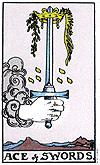


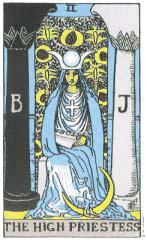




ARIEs March 21 - April 19
2013 is going to be a very powerful and energetic year for you with the wheel of fortune card indicated here. There will be success at work and financially you will feel a lot better with your ability to save money. Relationships need to be handled with care and attention. If single, take your time before you get into anything. Your health regime will be important for you. You will be looking at changing your eating plan or fitness regime.
TAURUs April 20 - May 20
This year you have the Ace of Cups, which indicates a year of success with work. You will be feeling much happier and feeling a lot more in control of your life. If single, you will find a soulmate connection. If married, you will find that you will be feeling more settled. There will also be changes with your work as you have been thinking about doing something different for a while now. Take care of your health.


GEmINI May 21 - June 20
predictions for JANUARY 2013
 By NANcY JADE ALTHEA www.nancysood.com
By NANcY JADE ALTHEA www.nancysood.com
LIbRA sep 23 - oct 22
This year is a time for you to decide what you want to achieve and go for it. The cards indicate a need to be more patient and caring in your love life. You need to save money as you will spend a lot more than needed, so take it easy. Take care not to get too stressed out, as this will affect your health. You will be full of ideas and inspiration so make full use of the energy.
scORpIO oct 23 - nov 21
This year will be full of energy and vitality for you. The cards indicate that you will be spending a lot of time with your loved ones. You will feel a lot of peace around your home and family life. You will worry about the health of a family member, and there will be stress around this. Financially you have the Ace of Cups which indicates a rise in income. Make sure you deal with any aches and pains immediately.

sAGITTARIUs nov 22 - dec 21
This year shows the card of burdens and a lot of responsibilities and hard work ahead. There will be times when you feel you want to give up and bury your head in the sand. Your family life is stable and supportive, and love is flowing freely. Be careful not to work too hard, and give yourself enough free time to relax. The cards indicate that you may be looking at starting a business with links in a few continents.
cANcER June 21 - July 20
The cards indicate that 2013 will be a time of struggle in the first half of the year, but things will then start easing considerably. You must now think of your health, make sure you follow a strict food and exercise regime. Financially, you need to put ideas into motion, as this is a great time to explore new opportunities and make them work for you. Look after your knees this year, some aches and pains may arise.
LEO July 21 - Aug 22
This year will be a very lucky and happy year for you. There will be success in work or business life. If you are in business, there will be plans to expand and bring in more people. Financially you will be feeling a lot happier and will be bringing in more money then you expect. Family life will be cordial, but you need to change some habits to maintain peace. Make time for yourself and keep your health at 100%.
VIRGO Aug 23 - sep 22
This year you have the card of balance and spirituality. You will be feeling peaceful whilst meditating and reading about the spiritual aspects of life. You have been working very hard and will need to take things easy and have a relaxing break. This year is all about giving your mind and body a well-deserved rest. Your health will be good this year, just make sure you maintain a healthy diet. Financially, you will be feeling settled as well.
This year will be full of rewards and surprises. You will be feeling more settled and mature with your dealings with people and situations than before. The Magician card also indicates a time when you can go for anything you desire, as you are more than capable of achieving your dreams. Your new tactic to be less stubborn and more compromising with family and lovers will be a lot more effective. Finances and health will be favourable.
cApRIcORN dec 22 - Jan 19
This year will be a great year with your work and finances. If self employed, you will gain power and control over your life. You will be attracting a lot of wealth and opportunity. Health matters will concern you, and with the star card, you may suffer from back problems. You will be looking at making plans to set up home in a different city or state. Love will come knocking in February or March, bringing a new soulmate.
AqUARIUs Jan 20 - feb 18
This year the cards are showing a good time for promotions and more money. You will be feeling very confident and happy. There will be a special holiday with your partner. There will be a lot of making up to be done with your lover, as you will not always see eye to eye. There will be acquisitions of property and other material gains. You will be looking into spiritual matters which will give you a lot of peace.
pIscEs feb 19 - March 20
This year will be about working hard to achieve your dreams. Your efforts may seem futile, but be sure to work steadily as the cards indicate that you will gain rewards in the end. Make sure you have regular eye checks. Do not take your loved ones for granted. Make an effort to stick to a health regime and make sure you do not eat too much junk food. There will be some good news connected to family.
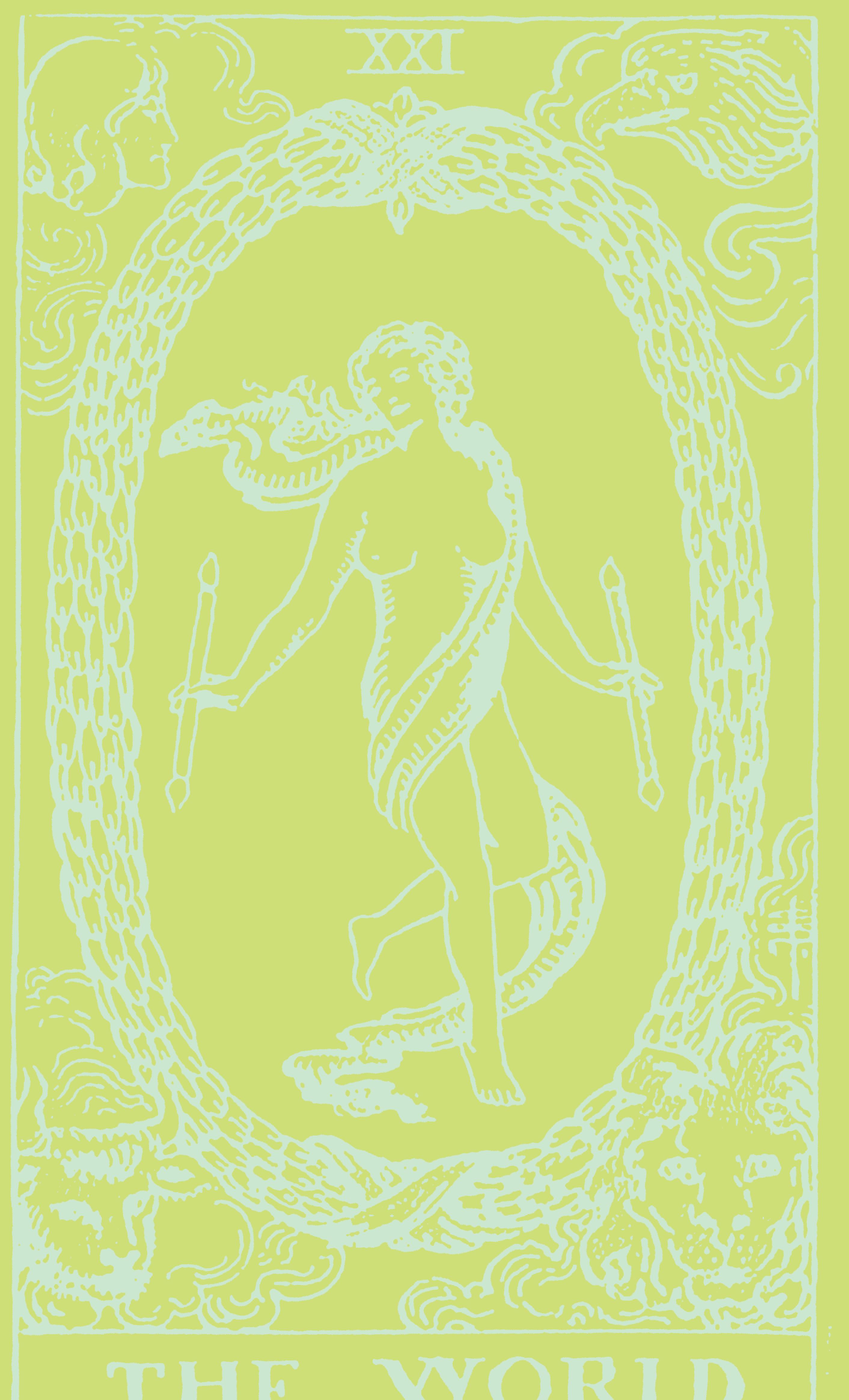
STARS FORETELL
the Buzz
Bipasha breaks free
Actress Bipasha Basu who recently released her second fitness DVD called Break Free, says choosing a male fitness icon from hunks like Salman Khan, Akshay Kumar and Hrithik Roshan is hard, because each of them has their own story to tell. But she does have a favourite. “I think Salman Khan has brought fitness into our industry. He is just going to be iconic forever. He is the fitness icon,” said the 33-year-old Bengali beauty at the launch of her DVD recently.
“Hrithik is an extremely handsome guy, great body. He has lot of issues which he fights and he triumphs to he looks the way he does... so definitely there is a great story there with Hrithik’s kind of physique,” Bipasha added, keen to explain the charisma behind her second choice. And naturally, she can’t leave out her first co-star Akshay, saying, “Akshay Kumar is my first hero. He is a guy who is not just physically fit, he is also mentally fit. So, everyone is iconic and inspirational and every one has their story.”
The sultry siren turns 34 soon, and will celebrate her birthday in sunny Goa with friends and family.
Bips’ latest DVD is based on dance workouts, but you can bet that most hunks and non-hunks will buy it to watch the sultry actress work out. Well, whatever works for you!
Zoa bags Bhaag Johnny
Actress Zoa Morani will soon be seen in a lead role opposite Kunal Kemmu, as she has recently been signed on as the leading lady of Bhaag Johnny. And she will be presented in a new avatar, says co-producer Bhushan Kumar who is coproducing the film with Vikram Bhatt. So why did Kumar decide to pick Zoa, a relative newcomer? “Zoa is a fresh, young talent who has a lot of potential
Arjun’s not a ‘campwallah’
Rumours are rife around Bollywood that Arjun Rampal has shifted his loyalty from Shah Rukh Khan to Salman Khan, but the actor is indignant that anyone should think so. Arjun says he doesn’t believe in such concepts and adds it’s his own ability that keeps him going in the industry. “It’s all nonsense, I am telling you,” the National Award winning actor said recently. “First of all, I don’t believe in camps. I just don’t. I am friends with everyone. I know Salman Khan since my modelling days and I have a lot of respect for Shah Rukh as well. But at the end of the day, wherever I go, whatever I do, I do it with my own ability. I don’t need any camps to be a part of,” he explained vehemently.

There were reports that Arjun, who worked with Shah Rukh in Om Shanti Om, RA.One, and Don, has now switched camp to Salman Khan. And Arjun’s tweet: “Killer first look Ek Tha Tiger, wow, can’t wait to see this one. Awesome”, added fuel to the fire. But the actor isn’t interested in these rumours as he is busy promoting his next release Inkaar that focuses on sexual harassment at the workplace. Arjun has teamed up with Chitrangada Singh in the movie, due to release in end-January. So SRK or Salman, it looks like Arjun’s heading for good things. Good luck to him!
GUeSS WHo ?
and we have just given her a platform to prove herself after her first release. Bhaag Johnny will showcase her in a new avatar and the audience will definitely love her,” he says enthusiastically.
The film is a film about a man who is forced to lead two lives and the chain of events that follow when he has to opt for one over the other.
Discovered by Shahrukh Khan, Zoa made her acting debut in Always Kabhi Kabhi in 2011. Surprisingly, she started off her career in Bollywood as assistant director for Om Shanti Om in 2007, and also for Halla Bol in 2008. Zoa has no interest in directing films, but took up the directing roles to familiarise herself with acting. She has also walked the ramp, trying out her talent at modelling. Well, let’s hope Zoa makes it big in Bollywood, good luck to her.
Rural flavour grips Bollywood
Designer dramas set in the glossy urban milieu may regale Hindi film audiences, but the endeavours of a few creative minds who are delving deep into the Indian hinterland to prise out stories reflecting the rustic and raw flavour of villages and towns, are paying rich dividends.
Vishal Bhardwaj’s Matru Ki Bijlee Ka Mandola is all set to continue the trend started by rural-based hit dramas such as Ishqiya, Peepli Live and Paan Singh Tomar. The film, featuring an interesting combination of new generation actors like Imran Khan and Anushka Sharma with a veteran like Pankaj Kapur, is set in Haryana. Given Bhardwaj’s past offerings like Omkara and Ishqiya, one expects Matru... to be truly Haryanvi in taste.
The intent surely seems to be itwhether it is Imran in the traditional khamiz, a tunic worn by the men of the region, Anushka in a desi ghaghra or the raw music, which is very much in sync with the movie’s setup.
So what inspired Bhardwaj to narrate rural stories?
“I love Indian folk music and villages. People from there are more interesting than the urban people, and I really liked to have those characters in my films. I grew up in a small town of Meerut (in Uttar Pradesh) and so mostly my movies reflect experiences of my childhood. While making movies I go back to my past and draw experiences from that,” he was recently quoted as saying.
These cute toddlers are cousins too. And now they’re both rising stars in Bollywood…

(Find the answer under Caption Contest)
In the recent past, the Hindi film industry has witnessed an upsurge in rural dramas. Dor, Gulaal, Rakta Charitra, Gattu, Dabangg, Udaan and the two-part Gangs Of Wasseypur were set against rural backdrops. Be it the ups and downs of politics, gang wars or even just the aspirations of people in small townsthese have been tackled with aplomb,
52 JANUARY (1) 2012 www.indianlink.com.au
ABHILASHA SENGUPTA brings us up-to-date on what’s hot and happening in Bollywood
ENTERTAINmENT
and, at times, with a tinge of satire. If it strikes a chord with critics and fans alike, the formula is working equally well at the box office.
No doubt that a star like Salman Khan, but its backdrop was totally rural! You rarely ever had a hero named Chulbul Pandey, but his quirkiness and magic worked - making the movie the highest grosser of 2010; and part two titled crossed the Rs.100 crore mark.
Sanjeev Bijli, joint managing director of PVR Ltd., gives credit to the changing taste of viewers and filmmakers.
“The Indian moviegoers, and makers have matured so much... it is very heartening to see (the change),” Bijli remarked at a recent event.
The willingness of the audience to step into the theatre to watch something beyond the A-list stars, the jazz and jamboree of fancy family dramas, and romantic sagas is certainly helping filmmakers to push the envelope.
Producers and distributors too have become experimental and don’t hesitate to take a risk to promote and support small budget entertainers portraying rural India, their set of problems a la postindependence movies like Naya Daur Bijli says such films are providing profitable option for distributors and exhibitors.
“From our company’s perspective, it is great because we don’t have to bank on just big budget commercial films. We will now be able to bring small films with much more confidence than we could about six years earlier,” he said.
Offshore too, such films are a huge hit and crime thriller Gangs of Wasseypur (GOW) and Peepli Live are a case in point. If GOW wowed film aficionados at the prestigious 2012 Cannes film festival, Udaan became the first Indian film in seven years to represent the country in the Cannes official section. One hopes the trend is only poised to grow, and we’re certainly supporting it.
Vivek Agnihotri’s into social comedy
We have to admit, Vivek Agnihotri is an interesting filmmaker, experimenting with various genres. After experimenting with adult film Hate Story and his current sociopolitical drama Freedom, next in line is a social comedy project.
“Currently I am busy shooting for my film Freedom, but soon after this I am going to try my hands with a comedy film. My next film will be a social comedy,” said Agnihotri recently, also revealing that the name of the film is and it will be a political satire,” he added.
But he was quite reluctant to drop names for the star cast. “There will be many established stars in this film. It is going to be a huge project. It is a very expensive film, so I have to make the best out of it. I will soon make an announcement,” he said.
Agnihotri started his career with the thriller Chocolate, followed by a sportsbased movie Dhan Dhana Dhan Goal
“I enjoy working on different genres. I don’t want to repeat myself as a director. I want to explore myself with different films, and so I have decided to make a comedy film this time round,” he said. Well, let’s wish him good luck, at least he’s trying!
Sonakshi to shake it


After grooving with Prabhdeva in ‘Go, go, Govinda’ for the film OMG: Oh My God!, Sonakshi Sinha will now shake a leg and much more for a 1980s’ disco style of dance for ‘Thank God it’s Friday”, a special song in the movie Himmatwala
The song, to be choreographed by Chinni Prakash, will have almost 100 dancers and 400 extras, said a source. “It is a retro disco number which will have reflective dance floors, mirrors and everything shiny and glamorous,” the source added. And Manish Malhotra has designed Sonakshi’s dress for the song, so its obviously going to be hyped. Himmatwala, a remake of 1983 hit movie of the same name, is being directed by Sajid Khan and features actors Ajay Devgn and Tammanah. Wow, looks like Sonakshi’s making headway into the league of item numbers with two under her belt. And many more to come, I’ll bet!
Saif, Aamir on Sudhir Mishra’s list
Off-beat filmmaker Sudhir Mishra, fulfilled a lifelong desire by teaming up with megastar Amitabh Bachchan in Mehrunnisa, and is taking baby steps into the wide world of commercial filmmaking. “I waited for 15 years to do ‘Mehrunnisa’ with Amitabhji. I don’t have a right to talk about the film now,” said Mishra recently, who is best known for directing films like Dharavi and Chameli
And now after working with the Big B, Mishra is keen to work with stars Saif Ali Khan and Aamir Khan. “If there is a star and correct casting, then it obviously increase the business. In today’s cinema scenario, if you have extreme engaging script, even that works. And if you don’t have star in your film, you better make a really very good film,” said the filmmaker who has just wrapped up his next directorial venture Inkaar starring Arjun Rampal and Chitrangada Singh. So what’s next on the Mishra horizon?
Sit up and take notice of women, says Big B Amitabh Bachchan says Sunmeet Kaur Sawhney, who recently won Rs.5 crore in a sixth season game of Kaun Banega and has become the first female contestant to take home the mega prize, has proved that women are strong and no less than men.

“Sunmeet Kaur of Mumbai, Maharashtra, a housewife that gave tuitions... was impeccable in the HotSeat. She never hesitated on any question, or did any kind of guesswork. At the Rs.1 crore mark, she had the option of two life lines, but refused them because she said she was somewhat sure of the answer,” Amitabh wrote on his srbachchan.tumblr.com Amitabh also mentioned the Delhi gang-rape incident that
CAPTION
who’s the Khiladi here!


Shivani Khanna, Campbelltown Shivani wins a CD of Hindi film Talaash

has shocked the nation.
“In the days that have gone by, where the dignity of a young girl has been maligned and brought to shame through the most heinous and disgusting acts of a bunch of animals, it gave me great pleasure to see a woman in a man’s world, taking on the many painful experiences, and coming out victorious.”
“Her (Sawhney) status as a woman was never compromised, and given an opportunity, she has proved to an entire nation, which hangs its head in shame for the gang-rape victim, that women are strong and no less than men that they do occupy an equal measure of importance and presence in a civilised world.”
The 70-year-old feels its high time society should give women their rightful place in the society.
“Sit up and take notice of the women in our country. They are half our strength... We must protect them. Give them their place in society, honour them and look upon them with dignity and standing,” he posted.
Words of wisdom indeed from the Bollywood legend!
Answer to GUESS WHO?
JANUARY (1) 2012 53 NATIONAL EDITION
Arjun Kapoor and Sonam Kapoor
AMITABH BACHCHAn
Last issue Caption Contest
BIPASHA
ZoA MoRAnI
Send in your responses to info@indianlink.com.au and win a surprise prize
SonAKSHI SInHA
Cine Talk
Salman all the way, holes in plot but fun watch
For those who thought Chulbul Pandey in Abinav Kashyap’s Dabangg was wacky and fun only because Salman Khan played him, here is more spoof-proof in the sequel of how Salman adopts, embraces and assimilates the characters he plays until one can’t tell the star apart from the character.
This is not to say Salman is a method actor. God forbid! He’s just the opposite. Chulbul Pandey, if ever such a khaki-clad lawenforcer even existed, would want to be as chirpy and obnoxious as Chulbul Pandey.
So what does Chulbul do in Dabangg 2 that he didn’t do in Dabangg? Nothing, and everything. There’s more of everything in the sequel and hence a sense of deja vu
The fights which begin, end and bolster the plot, are done with that irrepressible mix of guffaws and grunts that Salman patented in Prabhu Deva’s Wanted. Indeed it wouldn’t be wrong to say that Prabhu Deva was the father of Chulbul Pandey, in a manner of speaking.
Here of course in Dabangg 2, Vinod Khanna is back as Chulbul’s father. The scenes between Salman and his screendad are written with a delicious mix of irreverence and affection. There is a hilarious encounter on the rooftop of their Kanpur home where son asks his sleepy, annoyed father about the deceased mother (Dimple Kapadia, a mere photo on the wall in the sequel).
And then Salman leaves in a huff saying, “Mom was right. You’re no fun to sleep with. I am better off sleeping with my wife.”
Ahem! Save the blushes for a rainy day. Salman’s Chulbul gives us no time get bothered with niceties. Chulbul simply sweeps us along into a tidal wave of wackily written and executed action sequences undercut by a sharp sense of self-deprecating humour.
The storytelling is breathless. The characters can’t really keep pace with the breakneck storytelling. They are underdeveloped and largely kept in the shadows to accentuate the
Dabangg 2 takes off effortlessly from the first frame, creating a wackier, wilder, wittier saga than Dabangg woven around Chulbul Pandey’s agile, anarchic antics. Though the plot is written in half-hearted measures leaving many episodes including the climax looking incomplete, the film is loads of lowbrow fun with some peppy songs by Sajid-Wajid
which are filmed with an earthy gusto. Aseem Mishra’s camera looks at life in ‘Kanpur’ through wide-eyed lenses that stare unabashedly at the character’s quirks.
And now for the ek crore ka sawaal. Does Kareena Kapoor’s item song ‘Fevicol’ match up to Malaika Arora’s ‘Munni badnaam’ in the first Dabangg?
A redundant question. It’s like asking, does Dabangg 2 measure up to Dabangg?
Subhash K Jha
FILm: Dabangg 2
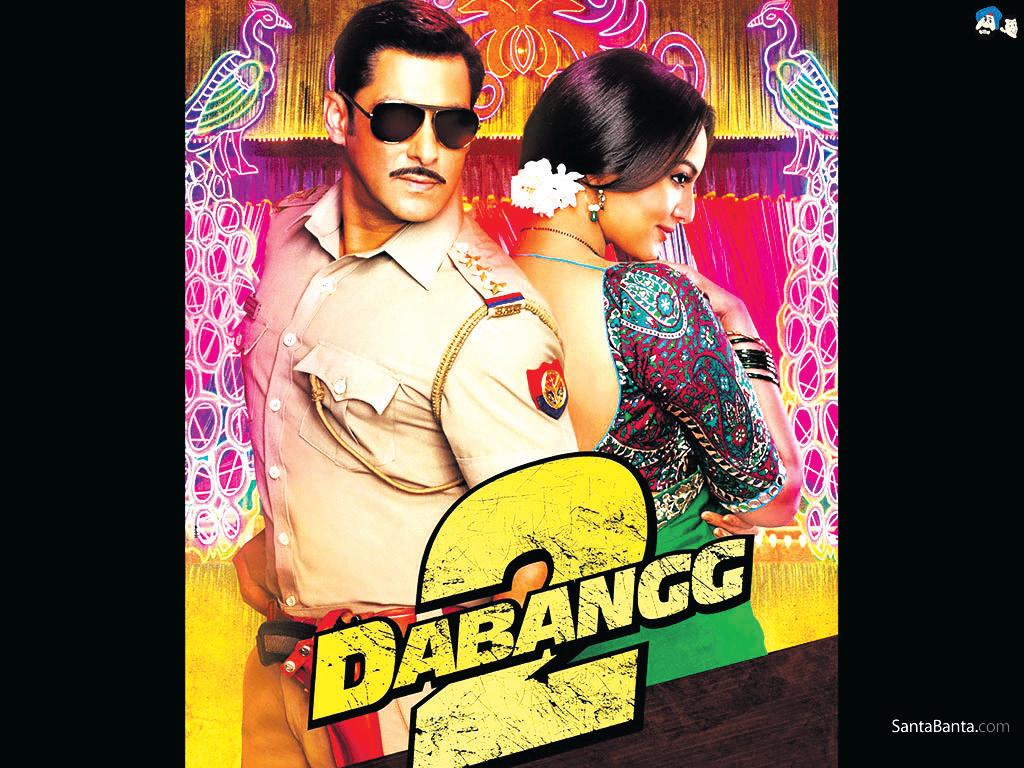
STARRING: Salman Khan, Salman Khan, Salman Khan, Salman Khan
DIRECTED By: Arbaaz Khan
www.indianlink.com.au
ENTERTAINmENT
54 JANUARY (1) 2013
taut thriller


The last 30 minutes of this gripping thriller has a life of its own. In fact, the endgame is so stunning and so overpowering in its message, that it makes us overlook the ingrained improbability of the rest of the film.
Not that Table No. 21 (and wait till you figure out why and how the film gets its title!) doesn’t work in its totality. It does. It’s a surprisingly good, almost-kickass way to start your movie-going in 2013. A goodlooking original thriller shot in eyecatching Fiji, Table No. 21 opens with a rather ambitious starry-eyed couple landing in Fiji to spend a prize holiday in the lap of luxury.
Director Aditya Dutta gets the tonality of the ‘good life’ right. The narrative then weaves itself into a rather bewildering and bizarre labyrinth, that is partly a tonguein-cheek tribute to the preposterous aspirations of reality game-shows where ludicrous thresholds of morality are crossed for high-end rewards, and partly a comment on what lengths young people would go to for their designer dreams.

Almost all through the game, we sense there’s more to millionaire Paresh Rawal’s game plan than just millions of hits on the internet that keeps him and the narration drooling till the end. The film draws its reasonable power and energy from its mix of the playful and the sombre. The two moods co-mingle in rewarding waves of episodic overtures where one by one, and the holidaying couple are swept into a vortex of horrific self-exploration.
The screenplay, written by as many as three writers (Sheershak Anand, Abhijeet Deshpande and Shantanu Ray Chibber) exudes an uncompromising freshness of approach. The last 30 to 35 minutes of the film is where the meat of the matter materialises in a moving flourish of conscientiousness. It is only towards the end that we recognise the actual demons that haunt the gamely tone of the rest of the film.
Rajeev Khandelwal is an actor who chooses unusual projects. His repertoire from
Aamir to Table No. 21 shows the mind of an actor in pursuit of excellence.
Paresh Rawal’s dependability as a performer of unpredictable skills never lets a script down. Here he is partly a slime-ball, party a screwball and finally a grieving angry father. Watch out for the innocent young Druv Ganesh as Rawal’s son. As a victim of college ragging, his eyes will haunt your for a long time after the film is over.
Table No. 21 is a surprise. The taut thriller shot on a scenic location constantly keeps a step ahead of the audience. This is an enjoyable and eventually disturbing riches-toragging story to start off the year.
Subhash K Jha



FILm: Table No. 21
STARRING: Rajeev Khandelwal, Tena Desae, Paresh Rawal
DIRECTED By: Aditya Dutta
Surprisingly NATIONAL EDITION Kids from 3 years old classes from early morning to evening Tel: 9744 7055 www.FamilySelfDefence.com.au Kickboxing, Jiu-jitsu, Hanmudo 1 GLADSTONE RD CASTLE HILL Fighter workout, Gym We improve confidence, Focus, Discipline, Fitness, Self Defence, Perseverance. One MoneyMonth Guarantee*backFree Uniform/Gloves* Conditions Apply* 2/85 VICTORIA RD PARRAMATTA Cnr Victoria Rd & Macarthur St, Opposite 7Eleven 14/118 QUEENS RD FIVE DOCK Cnr Victoria Rd & William St, Opposite Five Dock Leisure pacific tutoring www.pacifictutoring.org.au 1 Gladstone Road Castle Hill NSW How did your child perform at NAPLAN? What are you planning to do about it? *Scholarship programs are available for students and families with financial difficulties!!! Australian Curriculum Assessment And Reporting Authority (ACARA) “The National Assessment Program – Literacy and Numeracy (NAPLAN) is an annual assessment for students in Years 3, 5, 7 and 9.”NAPLAN tests the sorts of skills that are essential for every child to progress through school and life, such as reading, writing, spelling and numeracy.” Is the education of your child important to you? Of course it is !!! (*conditions apply) While Tutor Our Kids Association charges for their tuition services so they can provide the capital they need to purchase the resources for all students, they also offer scholarship programs for those students and families with financial difficulties. Tutor Our Kids Association scholarship program provides free tuition to students who come from families with low income to provide a fair tuition system. Fees for classes start from $8.90 per student JANUARY (1) 2013 55
Yes, you are being filmed, even if you are in India
Smile please. You’re on candid camera. This is not a joke. The likelihood is that there are now more cameras than human beings in your community, assuming that your community is my apartment.

I used to be irritated when my children wandered into the toilet when I was using it. Now I worry about them wandering in with camera-phones. The last time it happened, I threw toilet rolls and shouted, “I hope you’re not filming this for YouTube!” They replied, “Of course not, that’s so last month. It’s going out as a hidef live streaming video feed.”
When I finished in the toilet I had a look at YouTube and discovered that Shaky Blurred Pictures of Family Members Doing Dumb Stuff is now the single biggest category of video clips.
Thank goodness cameraphones had not been invented when I “fixed” the bookshelf so well that it collapsed, destroying a glass-top table and tossing my valuable silver-like 3rd runner-up school trophies out of a 9th floor window.
Escaping to the haven of the bar that evening, I gave a long rant to anyone who would listen about the sins of this camera-obsessed generation. To my dismay, many listeners were fans of the plague of cameras sweeping the world.
One showed me a press report in which sellers of surveillance equipment said there had been double-digit growth in 2012 sales in India. Another showed me an
announcement from the city of Panaji, which on December 25, 2012, revealed that it was putting cameras up at key locations across town.
A Londoner said a woman had thrown a cat in a garbage can. After the surveillance video went public, she received so many death threats, she needed police
protection. In England you can murder as many people as you like without unduly upsetting anyone, but if you cause the slightest discomfort to an animal, the entire population, including the Royal family, forms into vigilante groups to beat you to death with their bowler hats; or crowns, if the Queen and Prince Charles get
you first. (Being whacked with a crown must really hurt, as I bet the Queen’s husband knows only too well.)
A similar argument came from a guy fresh in from New York. A truck bashed into a pole and knocked it down, he said. A 23-year-old woman lay on the ground, apparently crushed. A surveillance camera revealed she had thrown herself down to scam the driver for damages. “You gotta admit, the camera was the hero in that story,” the New Yorker said. I suppose he was right. O where, o where were the surveillance cameras when I was being beaten to a pulp at school?
There were downsides to being constantly monitored, the Londoner added, explaining that the UK now had an estimated four million surveillance cameras on the streets. “I can no longer scratch myself in London because there are three high-definition cameras looking at me, one doing a wide-angle, one doing a medium close-up of my hand and the other roaming my trousers,” he said.
But before anyone thinks of adding still more cameras to streets in Asia, it may be a colossal waste of cash. A study by the UK’s Liberal Democrats concluded: “Police are no more likely to catch offenders in areas with hundreds of cameras than in those with hardly any.”
Yet my attitude really changed after my mentor/ bartender
When I finished in the toilet I had a look at YouTube and discovered that Shaky Blurred Pictures of Family Members Doing Dumb Stuff is now the single biggest category of video clips.
shared a brilliant idea: “If family members are really making videos of you, why not apply for an Equity Card?” If I had a large body of filmed work, I could get an Equity Card and register as an actor. I phoned a thespian and asked, “How much do unionized actors get paid?” He said, “The Screen Actors Guild guarantees all film or video actors with speaking parts a minimum rate of US$782 per day per project.”

Woohoo! Now if you’ll excuse me, I need to go and do some ‘stupid dad tricks’ at home. I may even try to put up another set of bookshelves. Look out below!

JANUARY (1) b Ac Kc HAT
The modern global obsession with cameras could become a paying proposition, discovers NURY VITTACHI

JANUARY (1) 2013 57 NATIONAL EDITION

58 JANUARY (1) 2013 www.indianlink.com.au

JANUARY (1) 2013 59 NATIONAL EDITION

60 JANUARY (1) 2013 www.indianlink.com.au



















































































 By PeTRA o’NeIll
By PeTRA o’NeIll













 y geeTA KHURANA
y geeTA KHURANA

























































 By NANcY JADE ALTHEA www.nancysood.com
By NANcY JADE ALTHEA www.nancysood.com






















